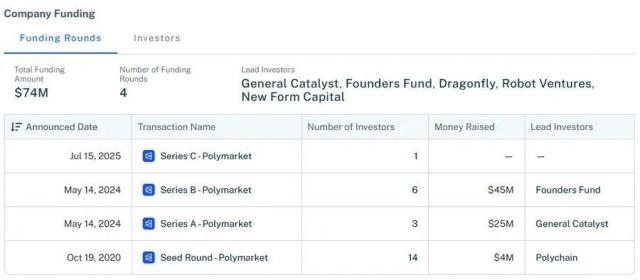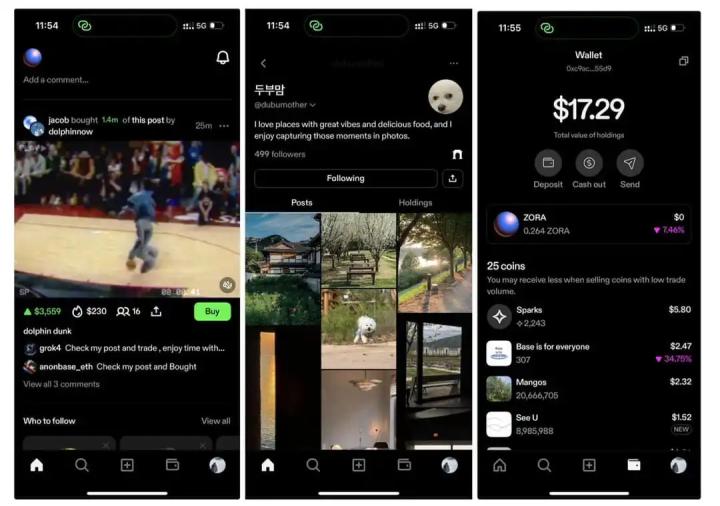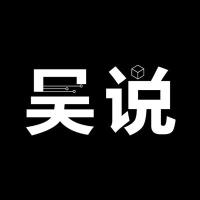Author: Cube Labs
1|Web3 Twitter Growth Practice: Three-stage Content Rhythm and Behavior Guidance Model
introduction
In the Web3 marketing system, Twitter has never been a channel that can be popular by posting tweets frequently. It is the starting point of the entire user journey, and it is also the core position for stimulating user cognition, guiding actions, and consolidating relationships.
For Web3 projects, Twitter plays three key roles:
🔍Cognitive shaping : Tell users why you are worth the gas fee;
🎯Behavior guidance : guide them from following to on-chain interaction;
🤝Participation motivation stimulation : Activate long-term contributions rather than a wave of users.
We believe that every tweet is not just content, but a trigger for a behavioral structure. It must have: ⏱️ Rhythm × 🧱 Layering × 🧭 Guidance
Based on our practical experience in building Twitter systems for multiple Web3 projects, this article will disassemble a complete set of "three-stage rhythm × layered content × behavior guidance" operation methods. The goal is not exposure, but to accumulate valuable users and build a growth closed loop.
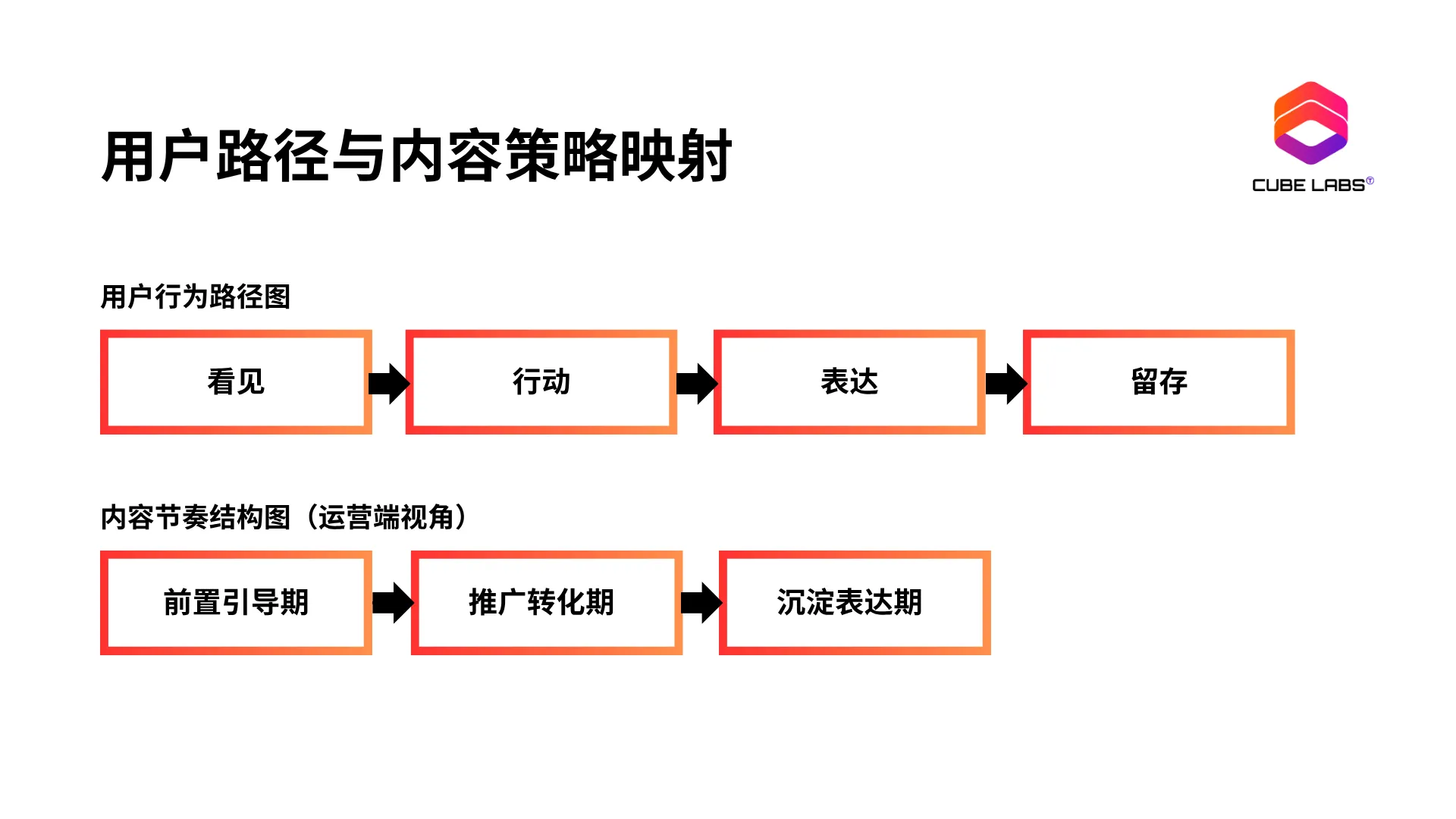
1. What core capabilities are needed to operate Twitter well?
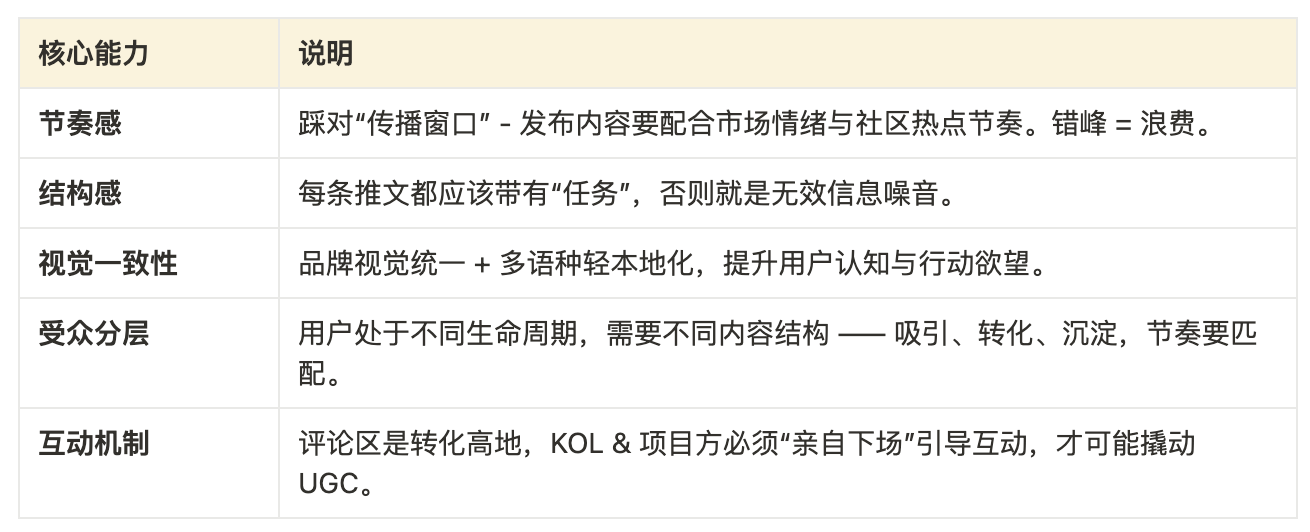
📌 Additional notes:
"Task" : refers to guiding users to complete a certain behavior, such as forwarding, screenshots, minting, participating in testing, etc.;
"UGC" : Content generated spontaneously by users, such as pictures, feedback, comments, and secondary creations, is a sign of community vitality.
In short: you are not just posting content, but planning “user behavior design” again and again.
2. How to judge operational performance? Analysis of Twitter’s five core indicators
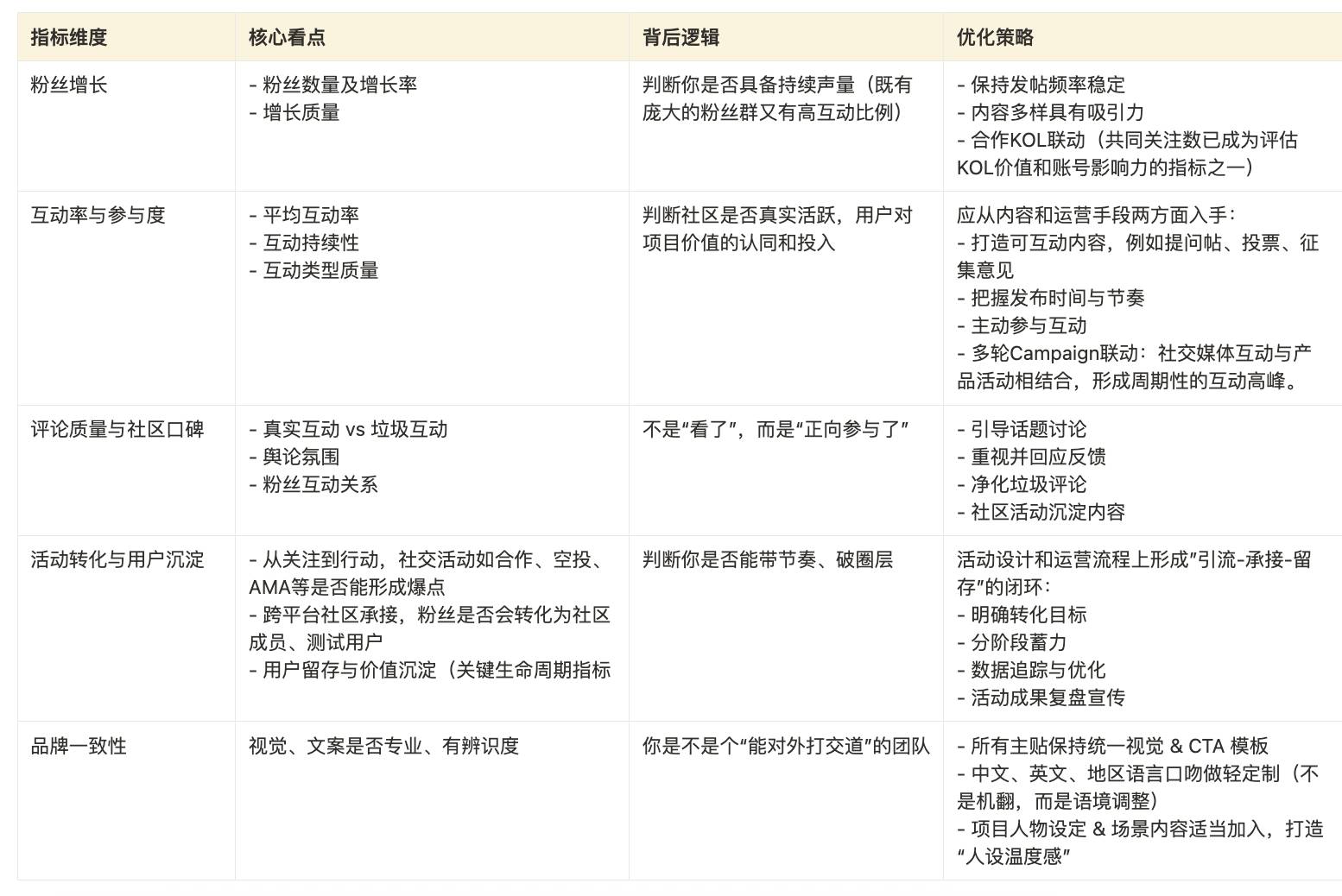 These dimensions not only represent whether Twitter is doing well, but also determine whether you have the ability to collaborate with exchanges. When planning Twitter operation strategies, project owners can create a social indicator monitoring table and set early warning lines to adjust their content strategies in a timely manner. How to view these key indicators? We need to use some external tools to observe their real data and trend performance. This article does not elaborate on the specific operation of the tools, especially Twitterscore, which will be used as a key tool in the future. Its principle and usage will be disassembled in detail in another article.
These dimensions not only represent whether Twitter is doing well, but also determine whether you have the ability to collaborate with exchanges. When planning Twitter operation strategies, project owners can create a social indicator monitoring table and set early warning lines to adjust their content strategies in a timely manner. How to view these key indicators? We need to use some external tools to observe their real data and trend performance. This article does not elaborate on the specific operation of the tools, especially Twitterscore, which will be used as a key tool in the future. Its principle and usage will be disassembled in detail in another article.
3. Matching user motivation with content: Not “send to everyone”, but “say what to whom”
To make Twitter a growth engine, the premise is: you need to know why users come and what stage they are at. Web3 users are not just there to "watch the fun", their behavior has motivations, thresholds, and thresholds. You need to prescribe the right medicine.
Four major user motivations & content response strategies
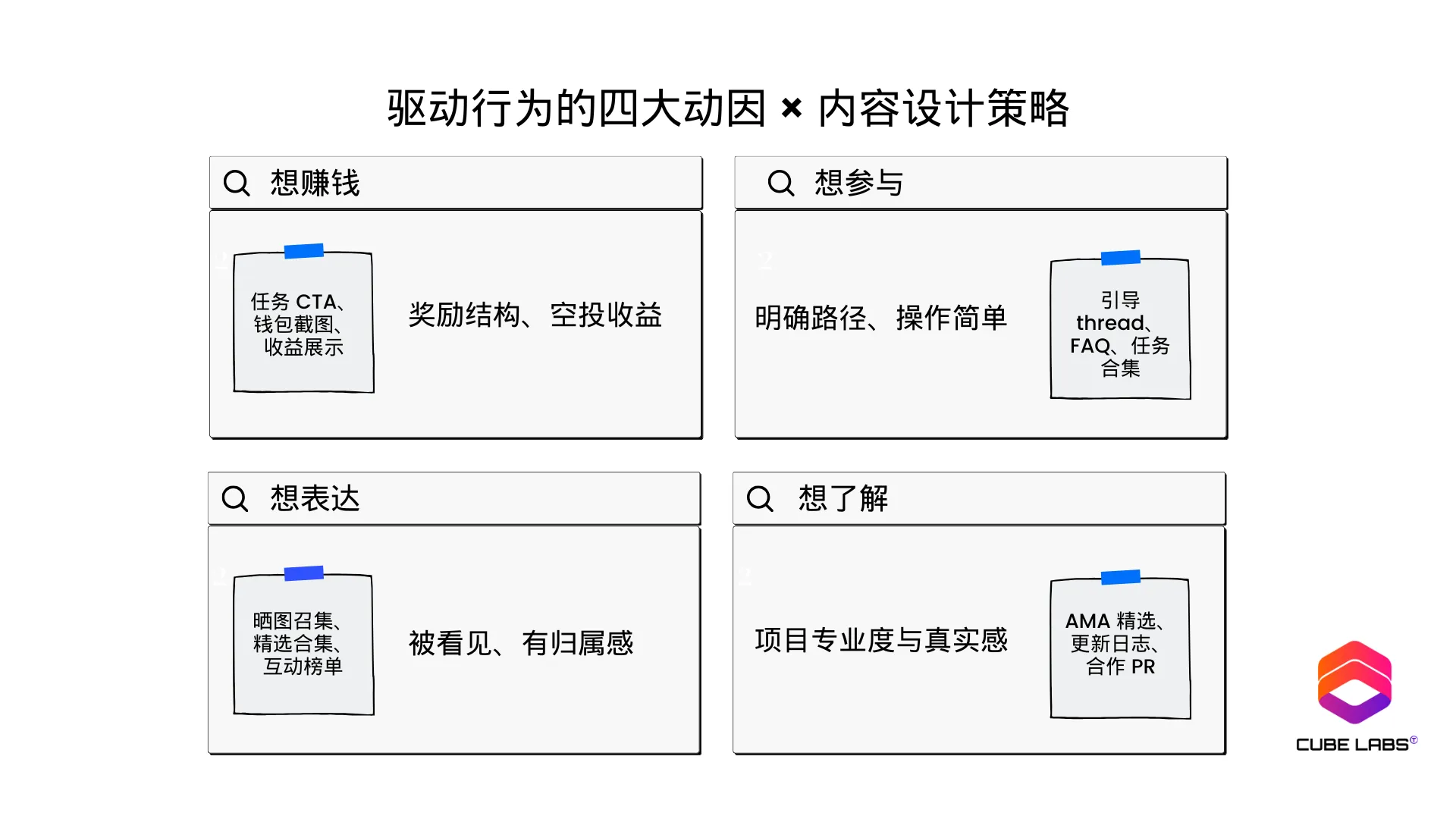
Each tweet should respond to at least one key motivation: "Can I make money?", "How can I participate?", "Are you reliable?" Answering these questions clearly is the switch that drives users to take action.
Accurate matching: different user asset levels × different guidance paths
There are differences in the activity of Web3 users: not everyone is willing to "hang on the chain", and not everyone will "rush in casually". If your content does not accurately correspond to their psychological stage, it will be difficult to really impress or motivate them to take action.
The following is a user tiering policy template based on the GameFi scenario:
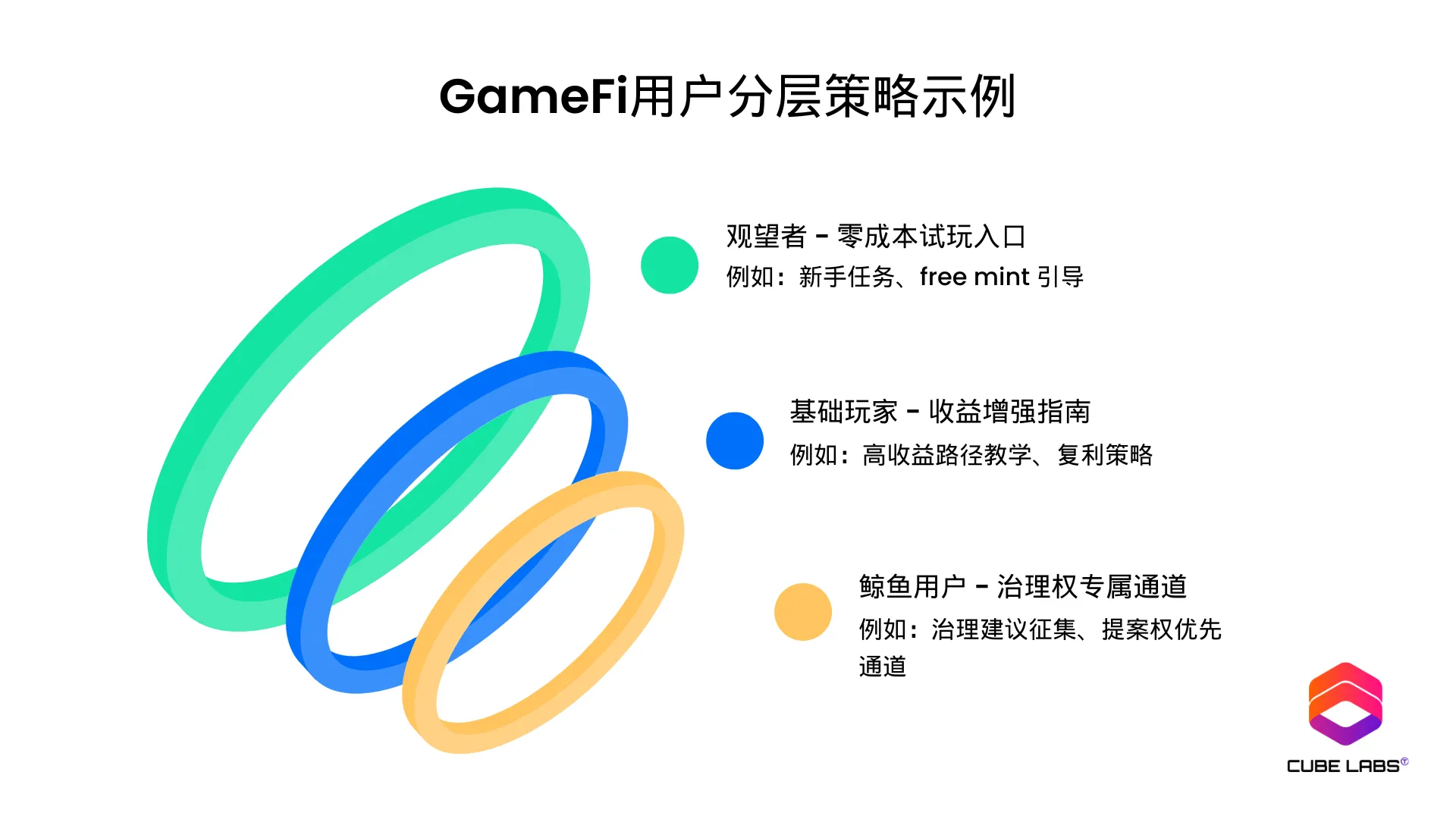
4. User rhythm matching: the underlying logic of the three-stage content system
Web3 users have scarce attention, complex motivations, and scattered paths. Twitter is not just a showcase for content, but a theater for structured guidance of user behavior . The goal of truly efficient operations is not to "be seen by more people", but to let the right people complete the right actions at the right time. We have summarized a three-stage content strategy model in long-term operations: rhythm × content × behavior , covering the complete path from cold start to precipitation.
Content strategy breakdown
Pre-guidance period – Awareness
Raise the visibility of the project to a wide audience, and maximize coverage and initial attention. The content focuses on catching the eye and catering to hot topics, with traffic as the core goal.
Operation points:
Hot topic leverage : keep up with industry hot topics and popular memes, publish current affairs comments or topic posts related to the project, and add hot tags. Use community buzzwords and hot events to get a lot of views. For example, Pump.fun (a one-click coin issuance/meme coin generation platform on the Solana ecosystem) borrowed the community buzzword "the next metaverse meta" as a topic to trigger discussion. The tweet detonated the entire network in a short period of time, with about 327K readings, 1000+ likes, and 1000+ retweets (internal statistics, platform official social media data). The project cleverly captures buzzwords, creates suspense with a short question, and guides user interaction. Combined with the background that Pump.fun has issued more than 11 million tokens and the cumulative capital pool market value exceeds US$4.5 billion, the tweet quickly spread to major discussion sections of the crypto community, increasing brand attention and platform usage.
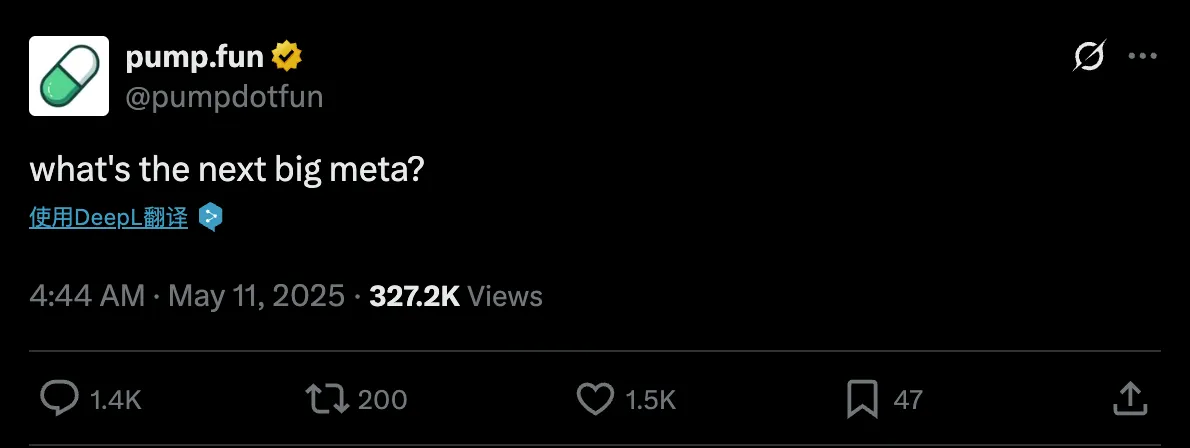
Cast a wide net for interaction : In the early stage when there are few fans, take the initiative to participate in discussions with KOL to capture traffic. At the same time, interact more with potential users: like relevant posts every day, forward high-quality content, and reply to all comments received to increase your presence in front of a larger circle. At this stage, the goal is to let as many people as possible "see you", so spare no effort to expand the reach of your content.
Eye-catching visual elements : Use rich media such as pictures and videos to increase user retention. Web3 projects can share product screenshots, data charts, or fun emoticons to enhance the appeal of content. For example, Azuki (a well-known NFT project) is good at attaching exquisite two-dimensional illustrations or animated shorts, making its tweets stand out in the vast information flow and attract a large number of reposts and discussions.
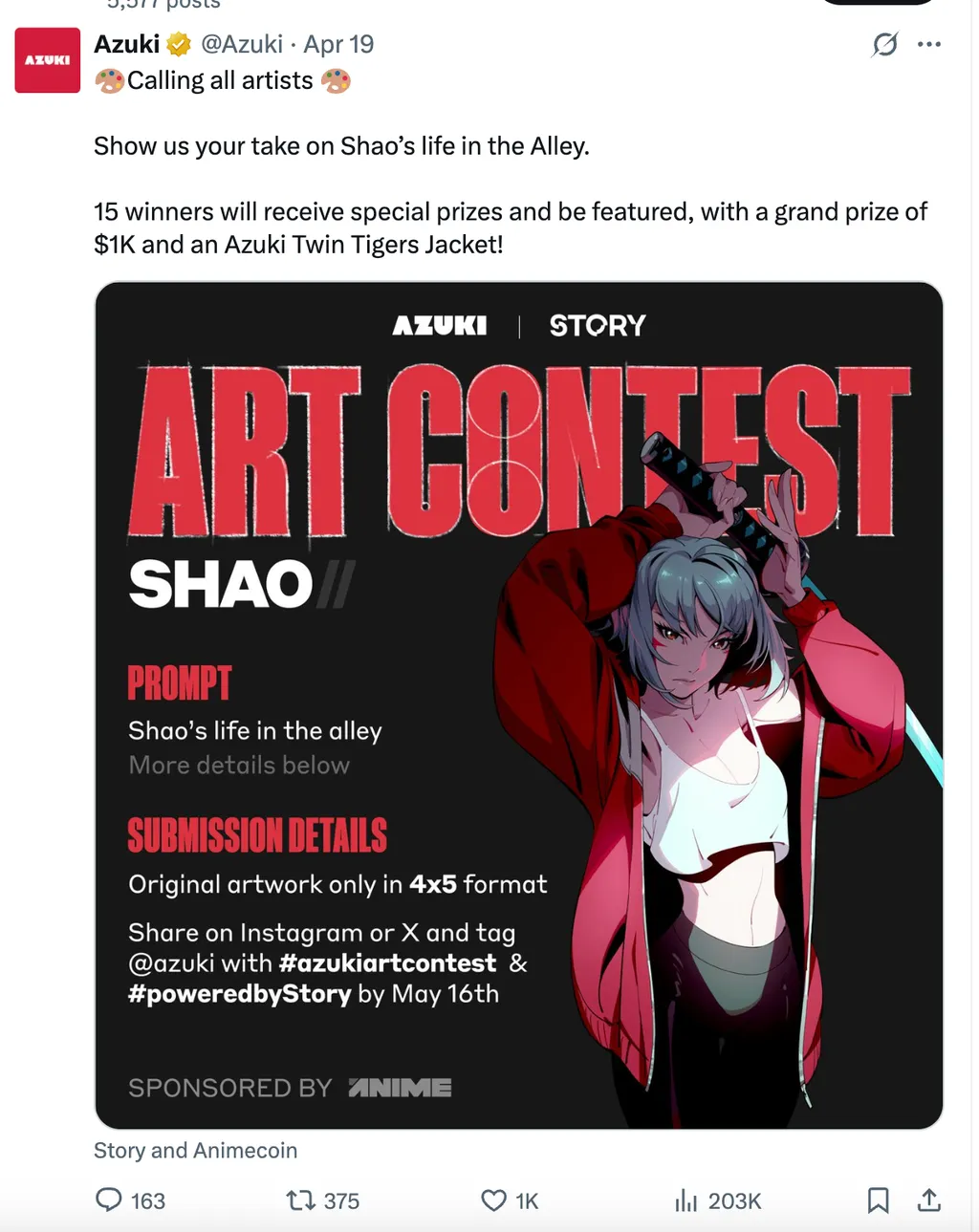
High-frequency content output : Maintain a stable and high frequency of posting to fight against algorithm forgetting. If a new account only posts one piece of content a week, it is difficult to accumulate potential energy; on the contrary, high-frequency activity is more likely to be recommended to more people by the algorithm. In practice, you can consider at least 1-2 original tweets + several interactive retweets every day . In the early stage, "quantity" is exchanged for "quality" accumulation, and the content release period must also match the active time of the target users. For example, the European and American markets can choose UTC afternoon and other peak times.
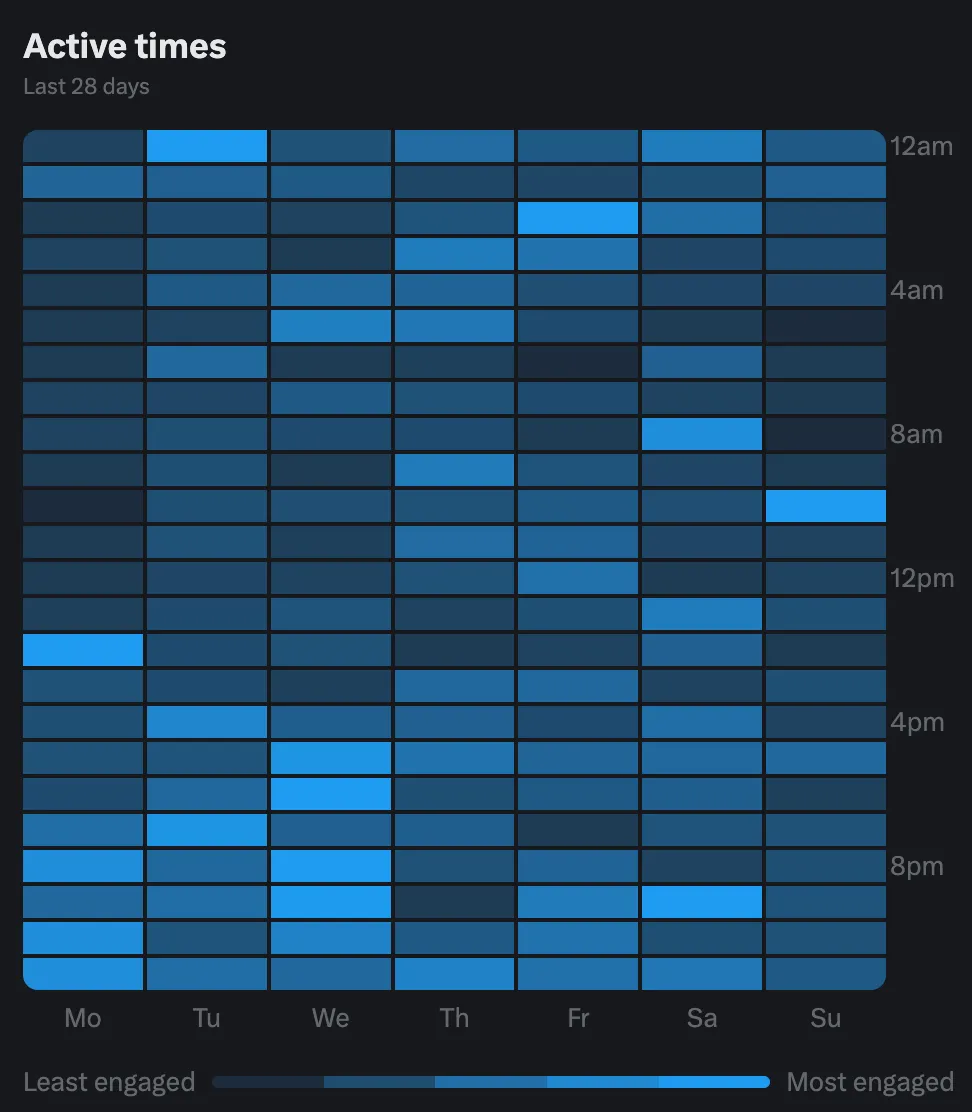
Figure: Active time of Twitter users of strategy GameFi projects
Promotion Conversion Period – Engagement/Activation
After gaining basic exposure, the conversion guidance and interactive cultivation phase begins . The goal is to convert potential followers into actual followers and gradually build trust and stickiness. The content strategy emphasizes value output and two-way communication, with the core being to increase engagement and promote action .
Operation points:
Deep value content : Produce content that is of practical value to target users and increase motivation to pay attention. For example, publish popular science tutorials, project analysis Twitter threads(threads), etc. to satisfy the audience's curiosity. The team of Curious Addys (an NFT project) once published a tweet thread, detailing the smart contract refund mechanism, which received more than 1,000 likes, much higher than the usual response to a single tweet. Twitter algorithms are also speculated to prefer such content where users stay for a long time, which helps to get more recommendations. In terms of content presentation, the beginning should directly give highlights to catch the eye, the main text should be clearly structured, and overly obscure terms should be used less to lower the reading threshold. By continuously outputting the value of dry goods, passers-by can be converted into fans .
Interactive activities : Design content that can inspire fans to participate, such as chain topics, AMA questions and answers, voting competitions, etc., to cultivate community interaction habits . Spaces provided by Twitter is a good tool for holding AMAs regularly, allowing team members to communicate with users in real time. For example, hold a project progress sharing meeting every two weeks, where the audience can ask questions on the microphone; or initiate a vote to collect community opinions on product features. This type of interaction not only increases user stickiness, but also makes them feel valued, so that they are more willing to pay attention to the project in the long term.
Emphasize user behavior : Clearly call for action (CTA) in tweets to convert exposure into actual results. Depending on the project attributes, CTA can be to invite users to visit the official website, subscribe to emails, join Discord/Telegram groups, or participate in the test network experience. The key is to be concise and powerful, and highlight the benefits of the action. For example, the Layer2 project Base places great emphasis on guiding users to "go to Base to experience various dApps" in operation. Statistics show that most of its tweets directly tell users "what they can do" on the Base chain, such as minting NFTs, participating in mini-games, etc. This continuous behavioral guidance has caused Base's daily active users to surge from 325,000 to 1.2 million in three months, and most of the users are still retained after the event. Similarly, other projects can also guide the audience to complete the target behavior (such as registration, Mint, etc.) by attaching operation links to tutorials and indicating the participation steps in activity posts, so as to turn attention into real user growth.
Cultivate brand trust : appropriately share the team stories and milestones behind the project to enhance credibility. While ensuring that the main content is valuable, some "behind-the-scenes footage" can make users feel the warmth of the project. For example, posting photos to celebrate the 100th day of the test network launch, the founder's experience of debugging contracts late at night, etc. These life-like details help to establish emotional connections and make fans more trusting of the long-term development of the project. Especially in the field of Web3, anonymous teams often make users feel insecure, and showing a certain degree of authenticity and transparency can precipitate trust . As senior practitioners said, after the long bear market, users are more eager for trust, and "real and hearty personalities" are more likely to be recognized. Therefore, in addition to outputting professional content during the interactive stage, it is also necessary to shape a reliable brand personality.
The content formula for the interactive stage is: 40% valuable content + 30% project dynamics + 20% interactive topics + 10% fun and interesting content
Retention/Loyalty
The ultimate goal is to convert existing fans and users into loyal supporters , who will become the long-term word-of-mouth communicators and ecological foundation of the project. This stage focuses on improving user loyalty and sense of belonging , preventing traffic loss, and forming a sustainable private traffic pool. The content strategy emphasizes refined operations and relationship maintenance, with community cohesion as the core.
Operation points:
Strengthen community belonging: Use Twitter to guide users to deeper community positions (such as Discord and Telegram) and continue to output exclusive value. For example, regularly publish the latest community updates or exciting discussions to invite fans to participate; send community invitations or badge NFTs to active fans in private messages to enhance their sense of honor. At the same time, fans' creations (such as illustrations, suggestions, etc.) can be displayed on Twitter to recognize the contributions of hardcore users in a high-profile manner , encouraging more people to participate in the interaction and get closer to the core.
Continuous high-quality interaction: During the sedimentation period, the rhythm of content output still needs to be maintained, but the frequency can be slightly reduced and the quality must be higher. Carefully cultivate content to give back to old fans for their long-term attention, such as in-depth research reports, roadmap interpretations, detailed live broadcasts of major functions and other high-value content. At the same time, pay close attention to fan feedback: reply to all comments as much as possible, answer private messages inquiries in a timely manner, and publicly thank and respond to important opinions. This kind of continuous and thoughtful operation will make users feel the sincerity and intentions of the project. "Users are not stupid, they can tell at a glance whether the project party is attentive" - when fans truly feel that they are valued, their likelihood of retention is greatly increased, and they are more willing to actively share and spread the project. It is necessary to pay attention to maintaining the continuity of the rhythm to avoid loss due to content gaps after acquiring a group of users.
Data-driven optimization : In the sedimentation stage, it is more necessary to rely on data to optimize operations. Key observations: ① Retention rate (whether followers are frequently lost); ② Interaction quality (the proportion of high-quality interactions such as retweets and long comments); ③ Conversion effect (actual conversion from Twitter to registration/group entry); ④ Public opinion trend (whether brand mentions are positive). KPIs can be set, such as "adding X high-quality fans every month and converting Y people into the community", and regular review to continuously optimize strategies.
Incentivize brand communication : Convert core fans into brand advocates . For example, plan a hashtag challenge to encourage old fans to post screenshots of their experiences or achievements related to the project, and give official reposts and rewards; select "community stars" and publicly commend them to drive more users to participate. At the same time, guide these loyal fans to join the DAO or contributor program and participate in project co-construction. When users transform from spectators to builders, precipitation and transformation are truly achieved.
Additional suggestions: Three elements of tweet content
Clarify user positioning
Each tweet needs to be targeted based on the behavioral characteristics and content preferences of the main audience area , rather than simply posting one tweet for multiple purposes.
For example, in the strategy-based Gamefi project: Vietnamese users prefer the "list sense" and ranking incentive visuals, and are keen on taking screenshots and displaying results; Japanese and Korean users prefer content with a strong visual style and outstanding design sense; English-speaking users generally pay attention to actual benefits, and conversion intentions are more focused on staking, NFT rewards, etc.
This positioning allows us to be more targeted in content deployment.
Topic structure systematization
We do not simply stack popular tags, but use a combination of "#ecological tag + #project core words + optional task platform" to improve content discovery efficiency and contextual coherence.
For example:
For tasks performed on the Base chain, #Base will be given priority to strengthen the sense of belonging to the ecosystem;
If the task platform itself has a brand effect (such as QuestN), you can add #QuestN to increase the platform exposure;
However, for some platforms or cooperation stages, we will consciously not include platform labels to prevent user paths from being diverted to other projects.
The core of topic structure is not "comprehensive coverage" but controlling the user's attention focus and maintaining semantic consistency and clarity .
Standardization of graphic and text structure (recommendation)
Unified image style (brand sense)
Copywriting structure = Question → Marketing setting → Behavior guidance
Attach a CTA link with a clear description (reward/deadline should not be vague)
Extension: How to create a popular tweet?
Generally speaking, a viral tweet (content that goes viral) often has the following elements:
Hit the hot spots or pain points: Either express opinions on the hot events that everyone is concerned about, or provide solutions to the users' actual pain points.
Eye-catching beginning: The first few dozen characters of a tweet determine whether the user will read the full text. Popular tweets often start with suspense, shock or questions to arouse curiosity; or directly throw out the conclusion/benefits to attract user attention.
The content has practical or emotional value: it either provides practical knowledge/welfare value or touches emotions (humor is also an emotional resonance). Pure advertising is unlikely to become a hit, and users are more willing to share content that is useful or interesting to others. So when writing, ask yourself, "What is the motivation for strangers to forward this?" If the answer is not clear, the content needs to be polished. For example, the safety and anti-fraud guide summarized by a certain exchange has been retweeted and collected crazily because it has reference value for all users; another example is a project that uses humorous comics to tell the chaos in the industry, which not only causes laughter but also conveys the brand attitude and also goes viral.
Make good use of algorithm preferences: Use the platform's known recommendation mechanisms to amplify dissemination. As mentioned above, long threads increase user dwell time, which helps trigger algorithm secondary recommendations; for example, the proper use of 1-2 hot topic tags can allow users under related topics to see them. You can also gain more exposure by guiding interactions . The algorithm tends to favor "high-value interactions", i.e. sharing and commenting. These calling behaviors can indeed increase the weight of tweets to a certain extent. Care should be taken to avoid excessive inducement (such as frequent lottery routines) to avoid causing disgust or being judged as low quality by the algorithm.
Timing and frequency: The emergence of hot products is also related to the release time and the long-term tone of the account. Choosing the time when the target audience is most active can achieve twice the result with half the effort. In addition, maintaining a certain level and verticality of account content for a long time can cultivate platform trust .
In short, a hit product = the right content + the right time + a good accumulation of accounts, the result of their combined effect. Each stage is not completed by a single tweet, but by a closed loop consisting of "content-interaction-feedback". We suggest that these three stages be considered as a coherent path:
Pre-stage = Open the door → Conversion stage = Sit down and chat → Settlement stage = Stay and eat
If you are planning content promotion for a Web3 project, you might as well check your content rhythm against this model. As long as you understand the correspondence between user status, content preferences and target behaviors, the ROI of the content may be able to achieve a leap from "liveliness" to "growth".
5. Practical verification: Is the content rhythm model really effective?
In the previous article, we disassembled the complete three-stage content structure model (pre-guidance → promotion conversion → precipitation expression) , so:
Does it work in real projects? Is it universal in the industry? The answer is yes.
The following are our practical results in a GameFi project:
Structural content + user behavior guidance → high conversion rate
We deployed the full Twitter content rhythm in this project, covering:
Visually unified task main post + warm-up post
KOL ignition and diffusion + multi-language deployment
Path guidance and clear CTA content
Interaction of community expression
The results are as follows:

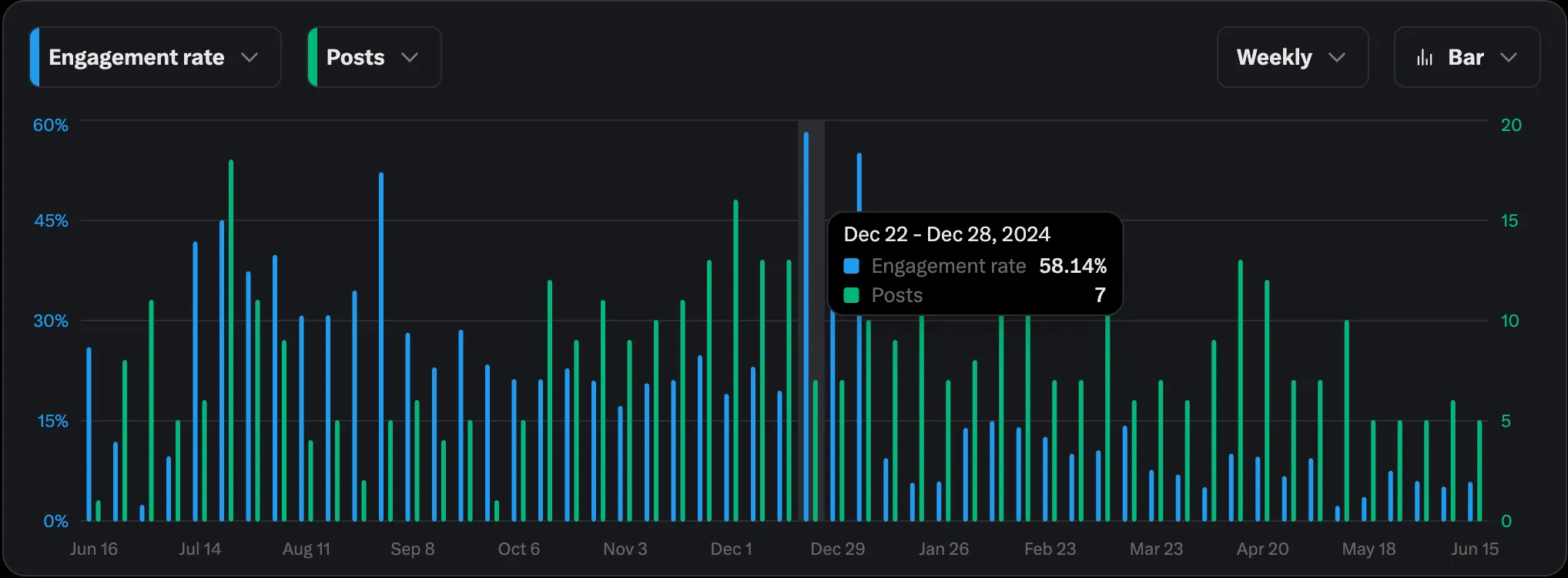
🧪 Is it universal across the industry? Web3 project Twitter content operation horizontal comparison table
We further selected the currently more active Web3 projects and conducted a horizontal analysis of their Twitter content operations:
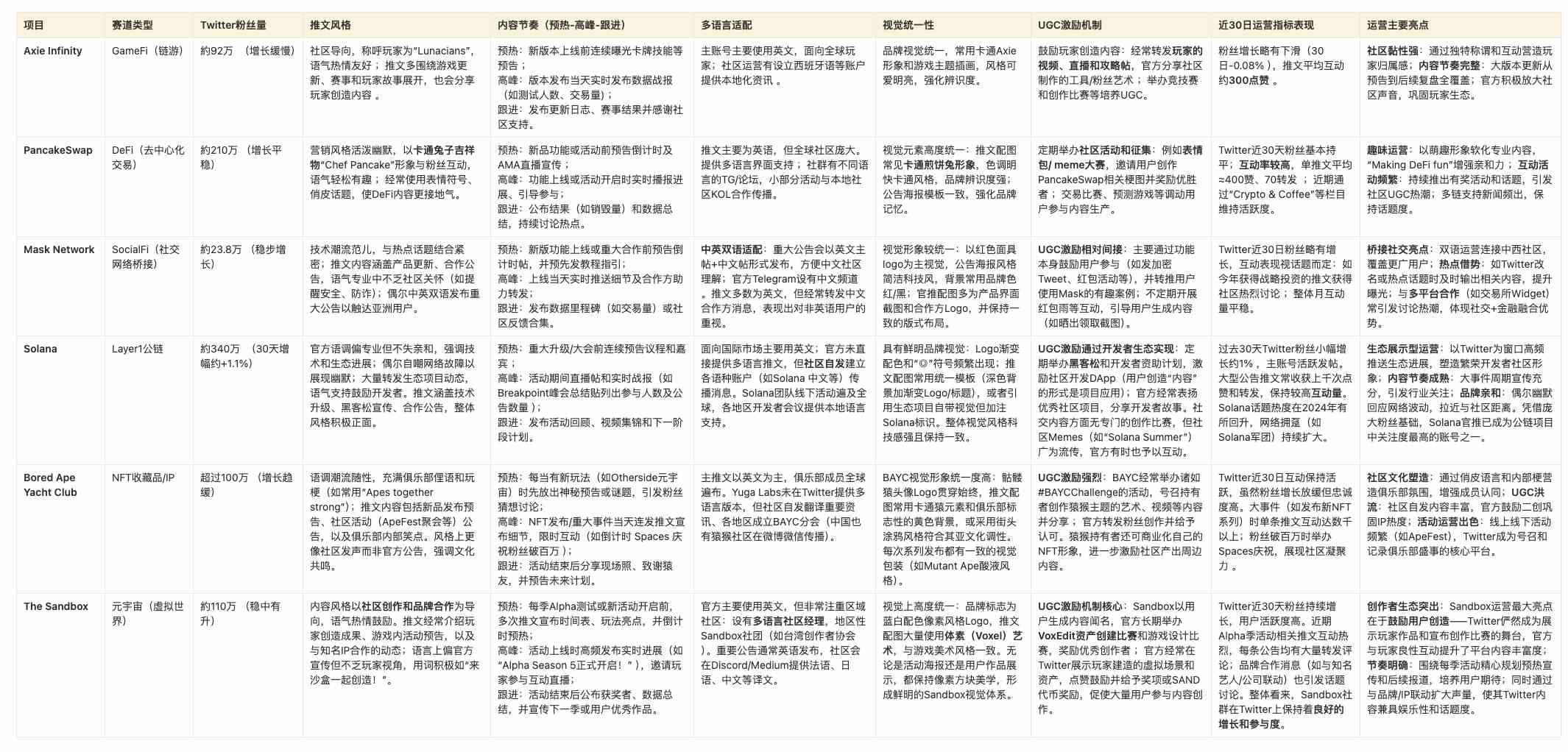
Table Description:
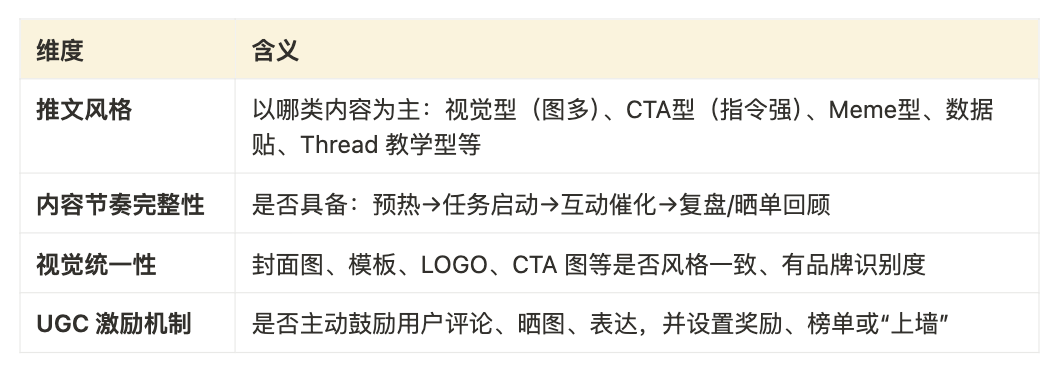
6. Conclusion: It’s not about posting to increase followers, but about designing behavioral paths
We don’t think that “posting is completing a task.” In the Web3 world, Twitter is the starting point of the user journey and a key position for stimulating cognition, guiding actions, and accumulating loyalty.
A truly effective Twitter growth system is a complete set of strategic projects:
Core concept recap (methodology closed loop)
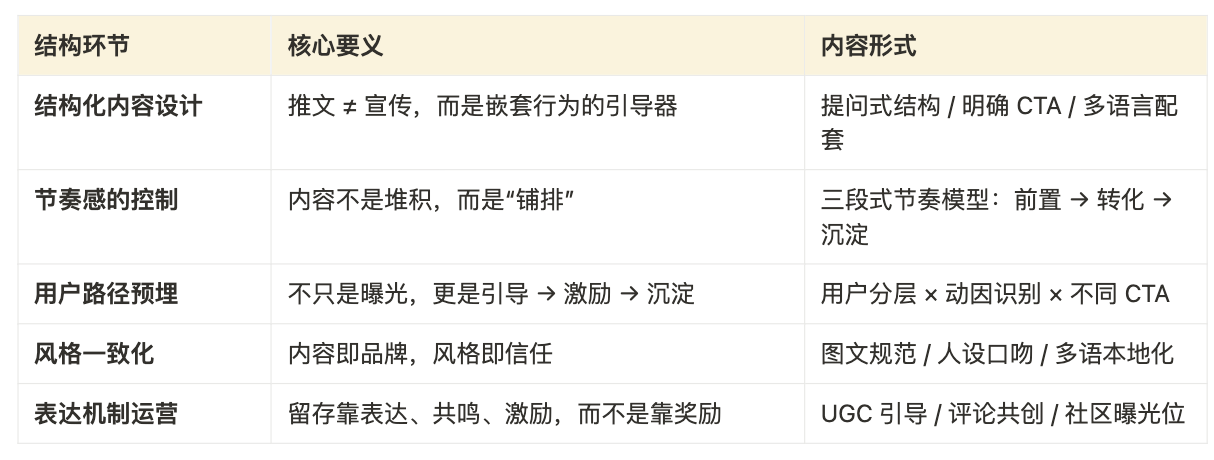
🧠 To summarize the methodology of this article in one sentence:
Successful projects all build content tactics through "rhythm + structure + guidance", thus achieving the path transition from attention to trust, and from clicks to sedimentation.
2|Web3 Campaign Design: Growth does not rely on "sprinkling sugar", but on the balanced design of "sprinkling sugar + path guidance"
introduction
In the growth design of some of our marketing cases, we usually conduct multiple rounds of campaigns through task platforms (including Galxe/QuestN/TaskOn). Past experience tells us that a truly effective campaign is not just about "giving out candy", but about designing a clear "behavior path": from curiosity → to trying → finally becoming a community expresser. To this end, we disassemble and integrate from the dimensions of platform comparison, task structure, incentive strategy, and data monitoring:
1. Platform Comparison
As a user growth tool, the basic mechanism of Web3 task platform is that the project party releases tasks, and users complete tasks such as social attention and on-chain operations to obtain rewards. Although the positioning is similar, different platforms have different focuses on user groups, task mechanisms and growth reach models. For the convenience of comparison, the following table summarizes:
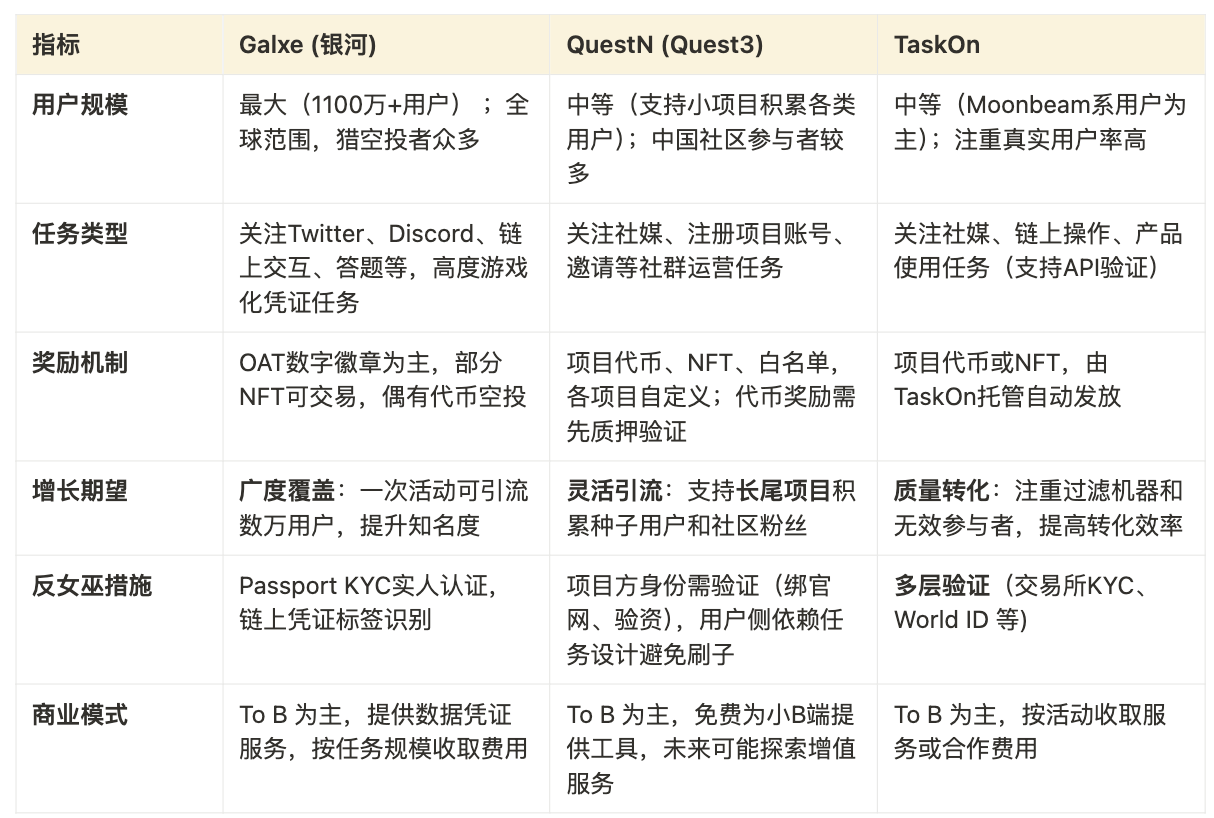
Although the platform types are different, the key is not the platform, but how to design the task structure . The platform selection is just a "container", and the structural design is the core of the campaign.
2. Rhythm Matrix & Key Node Feedback
In a campaign that was executed in a hybrid way using QuestN + Galxe + TaskOn , we took a strategic GameFi project as an example and set a clear content rhythm and target action nodes, from worldview planting to on-chain behavior promotion, and then to community expression sedimentation, forming a complete user path closed loop.
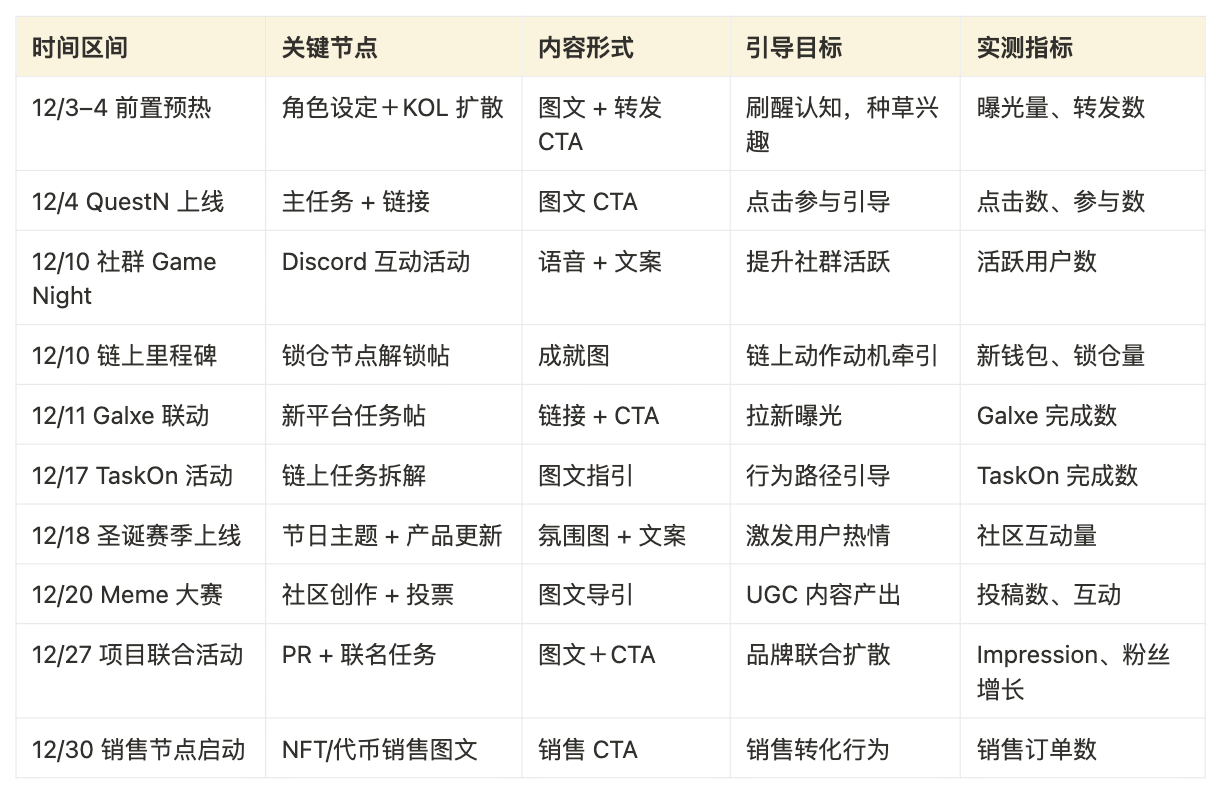
Stage feedback summary
Early stage : "Being seen" through warm-up + worldview planting
Mid-term : Task rhythm + on-chain milestones drive users to be “willing to try”
Later stage : UGC and expression-driven mechanisms activate users’ willingness to settle
3. Path Design: Behavioral Path from Interest Guidance to Community Expression
A well-designed campaign often achieves a multiple increase in the number of users in a short period of time, and brings substantial on-chain interaction to the project (increase in transaction volume, TVL, etc.). The key is to combine platform tools to build a behavioral path from interest to expression.
The path is divided into five stages:
1. Visual induction: planting points of interest
Establish a first impression and spark curiosity through character design, emotional copy, and visual hooks.
2. Layered task design: progressive threshold
Lightweight operations : follow, forward, comment → Introduce a wide range of users
Moderate participation : platform sign-in, mint, content screenshot upload → filter out low-quality
Heavy tasks : on-chain lock-up, staking, UGC creation → retain core users
3. On-chain – community linkage: enhancing the sense of belonging
After the user completes the on-chain behavior, he or she will immediately obtain a Discord identity tag, automatically join the task group, and condense the community affiliation.
4. Reward rhythm design: rhythm advancement and exploration drive
Early stage : low threshold rewards to quickly encourage participation
Mid-term : Condition unlocking ↔ further challenge mechanism
Later stage : Get extra rewards and honors through expressive behaviors (such as posting pictures, tweets, and rankings)
Set up hidden tasks and easter eggs to stimulate users' desire to explore.
5. UGC drive + list incentive: creating an ecosystem
By promoting user expression through picture sharing and rankings, a positive feedback mechanism of "you can also be on the list" is formed, which will then become part of the community culture.
4. Task design: screening out real users, paying users and on-chain active users
It is inevitable that there will be invalid users (such as scripts for tasks and people who use fake accounts to get free stuff) mixed in with a large number of Campaign participants. Therefore, when designing tasks, it is necessary to strategically screen out real and valuable users , with special attention paid to the following three types of user groups: real users (eliminating robots/free stuff parties), potential paying users (users with purchasing power and willing to actually use the product), and active users on the chain (people who actually use the project's on-chain functions). You can start with the guidance process, verification method, and screening logic:
1. Guidance structure: adopt a task path that goes deeper and deeper.
The task structure is adopted from easy to difficult and gradually screened to ensure that the task requirements can better distinguish the quality of users. The design of the entire task path should be similar to the funnel model: a large number of users enter from the starting point, and the core target users are gradually filtered out.
The first level : low threshold social media attention/reposting, covering a wide range of people.
The second layer : filling out questionnaires and uploading screenshots to raise the threshold for participation and improve user quality
The third layer : on-chain interaction (Mint, lock-up, pledge, etc.) to ensure that users actually use the product
As the scale of tasks increases, only users who are truly interested will continue to participate.
2. Anti-scam mechanism: identity + behavior double verification
Social media verification : bind Twitter/X, follow/retweet behavior records, T
On-chain verification : Screening real users through wallet interaction frequency and asset holdings
KYC and OAuth : Verify identity through Galxe Passport, World ID, TaskOn OAuth, suitable for high-value reward stages
Behavioral pattern recognition : Combine on-chain addresses with pattern recognition to identify batch addresses
3. Layered screening: assessing user value
Participants who complete all basic tasks are not of equal value and need to be further stratified and screened to identify potential paying users and high-value users:
Active contribution vs. speculation and arbitrage : Analyze the behavior patterns of users in the Campaign. Real users tend to actively interact in Discord, participate in AMA, etc., while pure wool-pulling people only do the minimum operation. The project can view the completion status of each user's tasks through the data panel of the task platform, and filter out those accounts that have only completed very few tasks but attempted to claim the prize.
Purchasing power judgment : Potential paying users usually have certain assets or are willing to pay for products. It can be evaluated in combination with on-chain data : statistics on the mainstream token balance in the user's wallet, whether they hold high-value NFTs, etc. as purchasing power indicators.
Influence and communication value : For community products, the social influence of users should also be screened. Observe whether users have secondary communication after completing tasks (such as forwarding to bring extra clicks), whether they actively speak in the community, etc. Some platforms provide invitation rewards or rankings , which can measure the fission effect brought by users by counting the number of invited friends and the amount of tweet interactions, and identify those high-influence users and focus on retaining them.
In short, in campaign design , multiple task levels and verifications should be used to filter users, and users should be stratified in combination with data analysis.
V. Balanced Design of Incentive Mechanism and Path Structure
In task marketing, incentives (Reward) are a means to attract users, while guidance (Guidance) is the key to educating users to understand the product and achieve retention. Problems will arise if the two are out of balance: too high incentives will attract a large number of profit-seekers who have no intention of retaining, while too low incentives will make it difficult to attract users; insufficient guidance will prevent users from learning the value of the product, while excessive guidance may make the process cumbersome and cause users to lose. The best practice is to achieve a balance between incentives and guidance :
Reasonably set the intensity and distribution of rewards : adjust the reward type and amount according to the target audience of the campaign.
New user acquisition period : low threshold rewards + sense of participation
Action period : High-value rewards for breaking through threshold conditions
Expression period : guide users to post pictures, participate in discussions, and list ranking mechanism
Enrich the forms of rewards and focus on honor incentives
Leaderboards, OG roles, badge identities, Discord privileges, build a sense of belonging and identity
Friendly process and high educational value : On the guidance path, ensure that the task design is friendly to newcomers while delivering product value. Avoid overly complicated operations and provide one-step guidance for newcomers.
Data-driven real-time adjustments
Monitor task dropout rate and completion rate, and dynamically optimize reward or guidance design
Introducing a variable reward mechanism to automatically adjust the reward structure when the number of participants increases
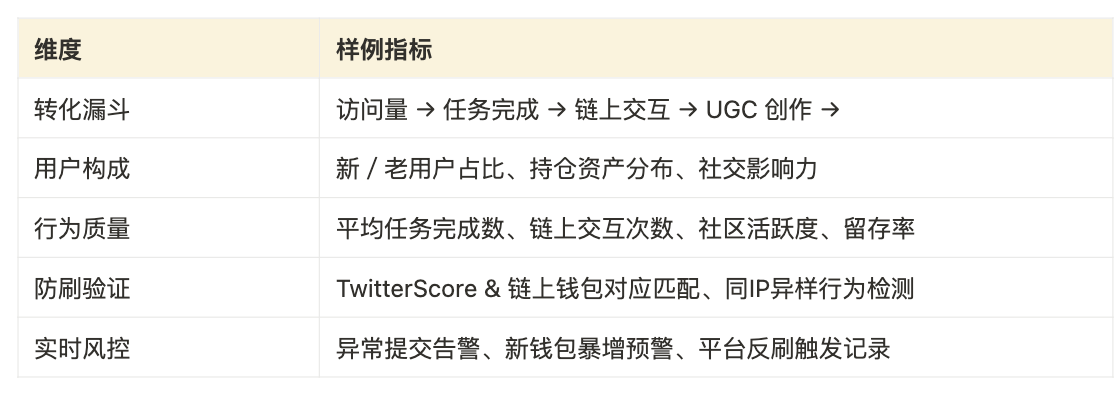
In general, a successful campaign design should allow users to gain both (rewards) and (knowledge/experience) during the participation process. Incentives are a double-edged sword. Excessive incentives will distort user motivations. Only when balanced with guidance as a shield can healthy growth be achieved. As advocated by platforms such as RabbitHole, users should be guided to focus on contribution and value rather than blindly pursuing profits. Only when users stay because they recognize the value of the project can incentive investment be transformed into real community assets.
VI. Data indicators and tracking mechanism recommendations: monitoring, verification, and optimization closed loop
To evaluate campaign effectiveness and optimize user screening, you must rely on a complete data indicator system and tracking mechanism . Web3 growth operations are becoming more and more data-driven. Here are some recommended indicators to focus on:
7. Successful Case: Web3 Campaign User Growth Practice
Excellent Campaign cases can directly reflect the power of task marketing. The following selects several representative Web3 project activities and analyzes their data results and key operations:
Movement Labs Parthenon (Galxe) : Movement Labs and Galxe jointly launched the "Building the Parthenon" testnet journey, connecting more than 50 DApps and setting more than 400 tasks on a unified portal, attracting more than 2 million users to participate. This event not only provides a real network stress test, but also allows the Movement community to grow rapidly, with 2.7 million Galxe Space followers, 860,000 X (Twitter) fans, and 840,000 Discord members. Key operations : Use the Galxe API to integrate multi-project tasks into a single process, design challenges in the form of "six major guilds (Guild) + personal tasks", guide users to complete exploration tasks and obtain badge rewards, thereby greatly improving community stickiness while exploring testnet problems.
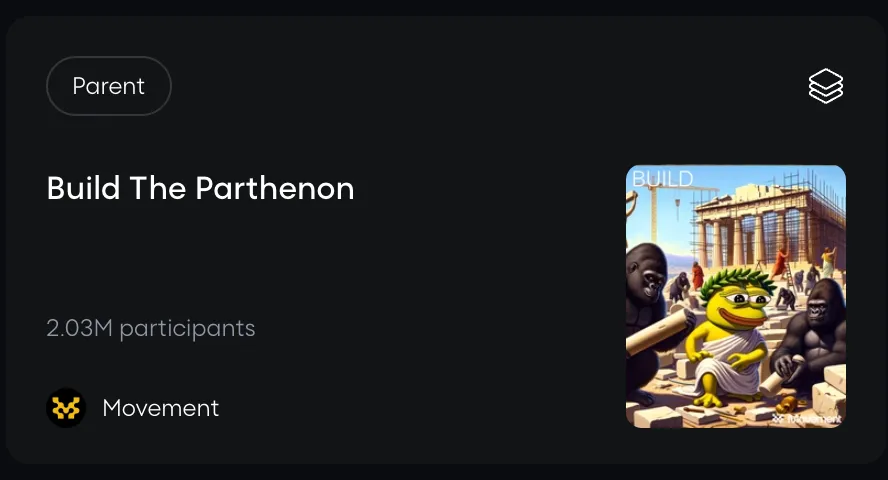
Growth of Hashflow decentralized trading platform (Galxe) : Cases disclosed in the Galxe platform white paper show that the Hashflow project successfully increased the number of active users per week from 3,000 to 13,000 by cooperating with Galxe to hold the Hashbot Genesis NFT series of activities. The specific approach is to issue a series of "Hashbot Genesis" NFT badges, and users can receive NFTs in batches after completing designated trading tasks. The event carried out ten rounds of airdrops, and a total of 20,000 NFT badges were minted, directly driving the Hashflow platform transaction volume to more than US$250 million . By combining trading behavior with digital badge rewards, Hashflow effectively incentivized users to interact repeatedly on the platform. Its CEO said that the NFT infrastructure provided by Galxe met the needs of the event well and became a tool for project growth. Key operations : Using Galxe's voucher NFT system, gamify trading tasks, airdrop rewards in stages, and continuously stimulate user retention and trading activity.
Solana Multi-Protocol Joint Event (Galxe) : In order to expand the Solana ecosystem users, the Solana Foundation and Galxe jointly launched the "2022 is Gonna be SOL COOL" campaign. The Campaign spans 27 protocols on Solana (including popular projects such as Port Finance, Orca, Jupiter, etc.), and is supported by Galxe to set tasks in multiple DApps. The event prize pool is as high as 1 million US dollars . Users need to explore the designated protocols one by one and collect 27 NFT badges to participate in the sharing of rewards. This "big linkage" event has attracted widespread attention in the community and eventually won more than 30,000 new users for the Solana ecosystem . Key operations : Use high rewards and multi-project cooperation to create momentum, and connect different DApp tasks through Galxe, so that users can be exposed to the diverse applications of the Solana ecosystem at one time, achieving a batch new user effect.
Arbitrum Odyssey Event (Galxe) : Ethereum Layer2 project Arbitrum launched the famous Odyssey series of events in 2022, becoming a new benchmark for Web3 task marketing. Odyssey was originally planned to last for 8 weeks, and cooperated with Galxe to release exploration tasks covering 56 ecological projects in multiple categories such as bridging, DEX, NFT market, and games . Users can receive Galxe badge NFTs as rewards by completing specific project interactions every week, and can also synthesize special badges by continuing to participate in different weeks. Although the event was temporarily suspended due to on-chain congestion, it still attracted hundreds of thousands of users to participate in the interaction in the early stage, which was regarded as a huge success in community growth. Odyssey allows users to deeply experience the Arbitrum ecosystem in the task breakthrough , laying the foundation for the subsequent surge in Arbitrum users and ecological prosperity. It is reported that Odyssey will last for 7 weeks after the restart, involving new tasks for 13 selected projects. Users can obtain personalized badges and may have subsequent airdrop opportunities after completing the exploration. Key operations : large-scale, multi-stage mission -based activities , combined with on-chain NFT badges and potential airdrop incentives, stimulate community spontaneous dissemination and participation. With the support of the Galxe platform, dozens of DApp tasks can be uniformly carried, greatly improving user retention and recognition of the ecosystem.
QuestN joint marketing activities : In addition to Galxe, large-scale campaigns are also being staged on the QuestN platform. For example, in July 2022, the Quest3 platform invited 50 project parties to jointly release task activities, including well-known projects such as CyberConnect, Mask Network, and SafePal, attracting a large number of users to participate in different project tasks at one time. This type of joint marketing allows multiple projects to share traffic, and users can obtain multiple project rewards by completing a series of tasks, realizing a "one-stop airdrop experience". Key operations : The platform organizes multi-project joint airdrops , provides a continuous task chain to increase participation, and each project provides rewards to increase the overall attractiveness of the event, making full use of the long-tail user group covered by QuestN to attract new users.
8. Success Mechanism Refinement + Operational Suggestions
Choose the right platform and mode: Choose the appropriate task platform based on project requirements.
Use joint campaigns (multi-project collaboration) to expand influence.
Logic for selecting cooperative projects: audience overlap
When we screen project partners, we give priority to: target user overlap to ensure accurate traffic generation.
The good effect of the activity comes from the "synchronous activation of multiple parties' kinetic energy". Only when the project parties are willing to participate sincerely and speak out together, can the linkage activity have a fission effect. It is not that users will come just because the platform has posted it and the link is hung. We found that in each round of tasks, the ones with significant effects have the following commonalities:
The project team will simultaneously promote the task on the official website/ Discord/ Twitter
Official accounts participated in retweets, explanations, and even participated in interactions
Tasks have structured guidance in the community (such as FAQs and operation diagrams)
Carefully design the task path : Task settings should serve the target conversion path of user growth. Follow the structure of "casting a wide net-fine screening": first use low-threshold tasks to attract popularity, and then use high-threshold tasks to filter and screen. The guidance process needs to provide clear guidance and support to reduce the difficulty for novices to complete advanced tasks (tutorials, customer service Q&A, etc.).
Moderate incentives to prevent over-exertion : The reward scheme should be attractive but not excessive. Control the balance between total rewards and single-user rewards, especially avoid unlimited and uncapped reward mechanisms (which are prone to repeated arbitrage by scripts). It is safer to adopt the raffle + contribution weighting method.
Focus on retention and continuous operation : Growth is not the end, retention is the key. After the campaign ends, there should be follow-up operations, such as pulling high-quality users who have settled in the event into the core community, continuously providing information access and special benefits, and converting them into long-term users. The product and community mechanism should be prepared for the back-end to undertake: such as invitation experience, transfer to DAO (contribution and identity system, etc.).
Summarize
In short, the user growth of Web3 projects needs to shift from extensive "human sea tactics" to intensive operations. Task-based campaigns provide a powerful toolbox, but success or failure depends on whether the project can use data to gain insights into users , carefully design processes , and continuously optimize . Platforms such as QuestN, TaskOn, and Galxe have their own strengths. Only by making good use of their strengths and combining their own strategies can they stand out in the fierce competition and achieve truly effective user growth and conversion. Every real user who participates in the campaign is a valuable asset of the Web3 community. Through good screening and guidance, we can not only allow users to gain value, but also allow the project itself to gain loyal supporters, thereby achieving long-term win-win growth goals.
3|GameFi community ecosystem construction: efficient strategies in Discord and Telegram
Introduction: The concept of community operation of induction, triggering and precipitation
In the GameFi project, the activity and cohesion of the community often determine the vitality of the project. Instead of simply and crudely "just calling for everyone to be active", a more effective strategy is to follow the concept of " induction + triggering + sedimentation ": guide users to participate in the interaction through induction and carefully designed incentive mechanisms, trigger various activities and topics to activate user enthusiasm, and sediment valuable content and core users to form the long-term assets and culture of the community. This article will analyze how to use the functional mechanisms of Discord and Telegram to build an efficient GameFi community ecosystem, especially explaining the strategies and roles of administrators (MODs) and core active users ("chatters") in three aspects: user retention, topic guidance, and user deep participation conversion.
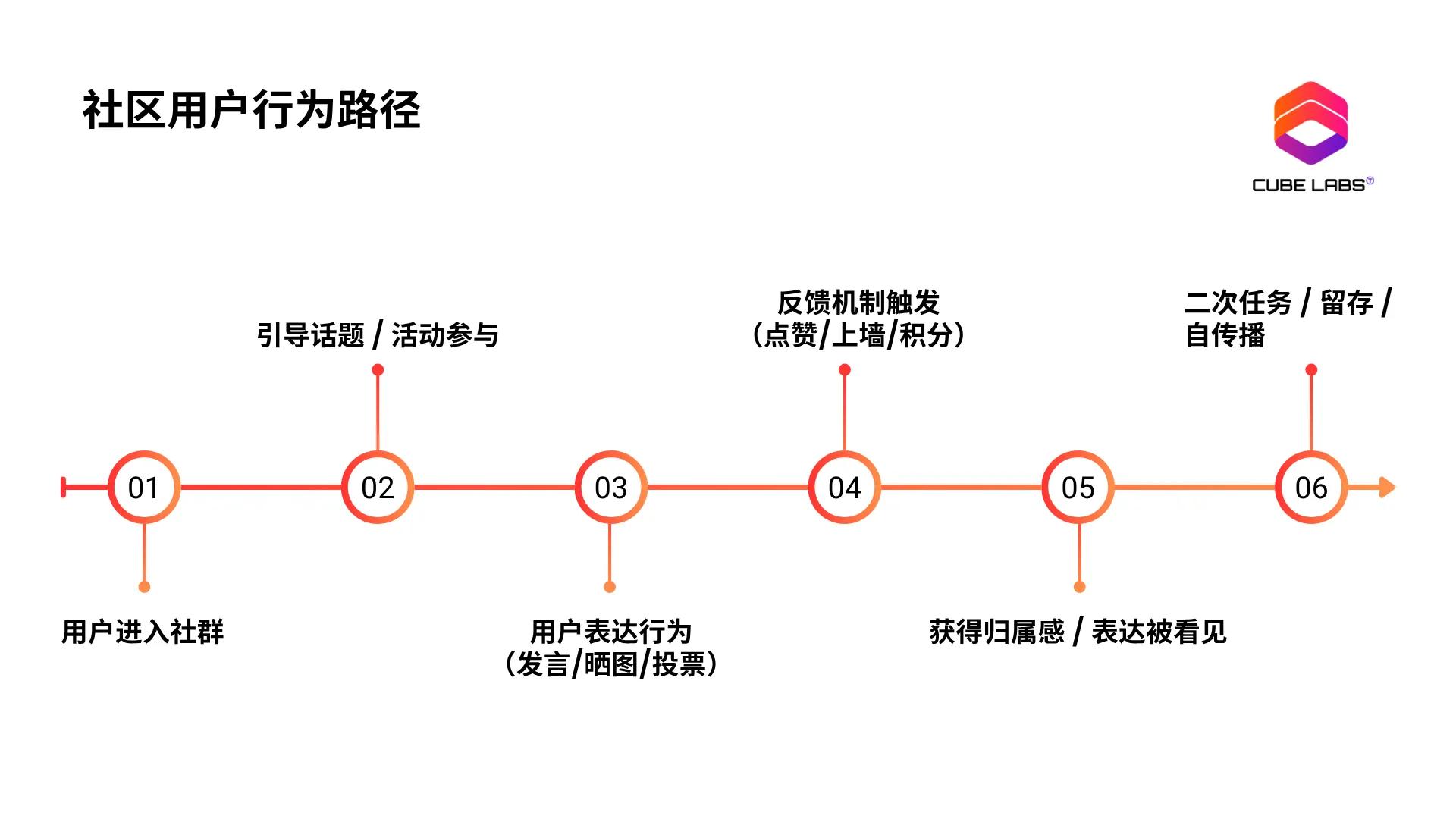
1. Community structure design: channel planning and identity stratification
Discord and Telegram are the two core platforms for Web3 community operations, each with its own advantages and clear division of labor: Discord is more suitable for structured community management, and can set up multiple channels, role permissions and robot tools. It is suitable for building multi-level, long-term interactive NFT/GameFi communities ; Telegram focuses on strong immediacy and rapid dissemination, and is often used in high-frequency scenarios such as pushing announcements, real-time Q&A, and airdrop interactions.
Most projects will adopt a "dual platform parallel" strategy: use Telegram to quickly guide new users and strengthen information reach; use Discord to undertake in-depth discussions, user accumulation and task-driven. A good community structure is the foundation of an active ecology.
On Discord , it is recommended to set up clear channel classifications, including announcements, rules, general discussions, technical support, FAQs, and exclusive holder channels. Such divisions help to organize discussions on different topics and avoid information confusion. At the same time, the identities of members can be stratified through roles and permissions (such as administrators, moderators, VIP members, newbies, etc.) to manage the community in a targeted manner. For example, exclusive roles and channels can be set up for NFT/token holders, and robots such as Collab.Land can be used to verify coin holders and grant special access rights.
On Telegram , due to the lack of channel classification function, the community structure is relatively simple. Generally, a main group is used for chat interaction, supplemented by an announcement channel for administrators to communicate information. Group rules, FAQs and other content can be placed on the top of the message to facilitate new members to quickly understand the community norms. Identity stratification on Telegram mainly relies on group administrators and robot permissions (such as anti-spam robots). Although it is not as detailed as Discord, it can also use verification questions and answers or verification code mechanisms to identify new members and reduce the risk of large-scale robot joining.
Regardless of the platform, a clear community structure and hierarchy can improve the user experience, help members get what they need and establish a safe and orderly discussion environment.
2. User Retention and Daily Active Maintenance
1. New user guidance and retention: a key step in building the user's first impression
The starting point of user retention is a good "first experience". In Discord, MODs can actively guide new members to understand the community structure and how to participate with the help of features such as the welcome page and the beginner's guide, helping them to quickly "break the ice". For example, setting action guides such as "Please introduce yourself first" on the welcome interface can help increase the first-day speaking rate, thereby enhancing "first-week retention" - that is, the rate at which new users remain active within 7 to 14 days of joining.
At the same time, the activation rate of new users can be greatly improved by implementing automated welcome and guidance through BOT, and timely sending announcement links, task instructions, identity collection methods, etc. Appropriately arranging simple questions and answers or quick tasks as "entry clearance" can also effectively enhance user participation and sense of belonging.
2. Daily active mechanism: continuous output drives interaction frequency
To maintain the daily popularity of the community, we cannot rely solely on "shouting-style activity", but need to design continuous content and incentive mechanisms. MOD can introduce gamification mechanisms , such as using robots such as MEE6 to track the frequency of speaking, setting up a points upgrade system, and giving members different levels of identity and corresponding permissions. Users get growth feedback in daily chats, forming a self-motivation closed loop.
It is also worth introducing a ranking mechanism: display the top 10 most active users every week to create a healthy competitive atmosphere. "Sign in" and "topic Q&A" can be arranged as light tasks on a daily basis, and badges or points can be awarded appropriately. For Telegram communities, timed robots can be used to post questions and initiate votes every day to maintain the frequency of community activity in light interactions.
3. Content and activity driven: Providing communities with something to talk about is the key
The activity of a healthy community comes from "predictable and interesting content output". The MOD team can develop a content calendar to plan daily topics and weekly activities, such as:
QOTD (Question of the Day) : A lighthearted, open-ended question, such as "What treasure did you find in the game today?"
Weekly AMA / community voice activities : hosted by project owners or senior players to provide information and enhance the sense of connection
Mini-games/voting/check-in challenges : lowering the threshold for participation and forming a sense of community rhythm
A typical example is StepN, which regularly organizes community voice chats and running challenges, which not only enhances stickiness but also forms community traditions. MOD should continue to plan such activities and standardize the execution rhythm, so that users can develop the habit of "checking in" to the group every day.
4. Incentives and feedback: turning "activity" into "precipitation"
An effective incentive mechanism is the key to transforming users from "just coming for the show" to "staying".
GameFi projects usually combine the dual strategies of "honorary incentives + physical rewards". For example, Axie Infinity once issued 2,000 tokens to the top 100 most active members in Discord, which directly boosted the popularity of the community. Role incentives are equally important. Titles such as "VIP" and "Honorary Member" are often bound to unique permissions (such as testing priority, hidden channel access, etc.), which are highly attractive.
In Telegram groups, robots can also be used to conduct lucky draws or airdrop tasks, such as "check in for 7 consecutive days to win a lucky draw", or randomly distribute token rewards to members who participate in AMA. Through a normalized small reward mechanism, activity can be gradually transformed into accumulation, forming a sense of accomplishment and psychological belonging for users.
The key to sustainable community operation is not to be active for a short time, but to transform short-term activity into long-term accumulation and guide immediate behavior into deep identity recognition . When the incentive mechanism promotes recognition, users will truly stay and form a stable community force.
3. Topic Guidance and Atmosphere Creation: Building a Community Culture of Continuous Interaction
An effective community does not depend on the number of "screen swipes", but on whether it can continuously produce valuable topics and create a positive community atmosphere . High-frequency interaction does not mean high-quality operation. The real art of operation is to ensure that discussions always revolve around the core interests of the community through structural design, rhythm planning and cultural guidance.
As someone said: "The art of community operation is not to force output, but to create an atmosphere." Just because members speak a lot does not mean the atmosphere is good; truly valuable discussions should revolve around common interests and be guided by positive construction.
1. Channel and topic design: clear structure and guided discussion
In Discord, structural design is the first step in topic management. A GameFi community usually includes multiple channels such as announcements, game discussions, technical support, player works, and chats. Each channel has a clear description and functional positioning. For example:
#announcements: only used to announce official news;
#game-strategy: encourages players to share strategies and character matching skills;
#support: Specialized in handling technical issues and account inquiries;
#off-topic: An open chat channel used to bring members closer together.

This "multi-person group chat + multi-channel parallel" structure not only facilitates information management, but also makes it easier for members to find their own discussion scenarios, thereby lowering the threshold for speaking and increasing willingness to participate.
In contrast, since Telegram does not have channel classification, topic guidance relies more on administrators to actively raise topics or use the "label + time" system for ritual management. For example, every Monday is "Strategy Sharing Day", and the administrator uniformly initiates "#Strategy Discussion" to guide members to share game experience; every Friday is set as "#Chat Friday", encouraging everyone to chat about some light topics and enhance familiarity. This kind of fixed rhythm arrangement can help members establish participation expectations and is a practical way to operate topics on Telegram.
2. Guiding the content rhythm: Discussions can be “designed”
A healthy community should not always wait for users to "find topics", but the MOD should take the initiative to play the role of "host", plan the content rhythm, and create discussion opportunities.
The most basic way is to set up a list of topics, pick one every day (or every week) and throw it out to guide members to participate. For example: launch a topic around the updated content, "What impact do you think this change has on you?"; or guide users to share their experiences: "Is there any unpopular lineup that is actually very useful?"... This kind of lightweight, resonant, and easy-to-participate topic is most suitable for maintaining daily activity.
In addition, holding regular themed discussion activities is also an effective mechanism. For example, a discussion hosted by a MOD is held every Friday night. A direction is selected (such as economic system adjustments, role balance suggestions, PVP experience sharing, etc.) to guide members to conduct centralized communication. In conjunction with voice channels, live broadcasts or AMA formats, it can also enhance the sense of ceremony and participation.
In order to further enhance the motivation for participation, a certain "display mechanism" can also be added: for example, a "Star of the Week" selection is set up, and the administrators sort out high-quality speeches every week, select the "Best Guide Writer" and "Most Enthusiastic Answerer", and pin them to the top of the channel for praise. This mechanism is both an honor incentive and a way to screen content and accumulate community culture.
3. Community culture and rules: turning atmosphere into habit
A good community atmosphere cannot be achieved by administrators alone, but requires long-term cultural accumulation. The task of MOD is to set clear rules and maintain this atmosphere with the help of tools and "soft guidance".
In terms of the system, it is necessary to clearly prohibit negative behaviors such as screen spamming, verbal abuse, and personal attacks, and use robots such as Discord AutoMod or Telegram Rose Bot to set up banned words and warning mechanisms to ensure the basic safety of the discussion environment.
On the cultural level, we can encourage "daily interaction rituals" among members, such as saying "GM/good morning" to each other every morning, or using specific Emoji expressions at important moments to form a sense of tacit understanding. Another example is to encourage members to share their failure experiences and talk about interesting things in real life, to dilute the negative atmosphere of showing off and contempt chain, so that newcomers can also have a voice in the community.
Many successful GameFi communities have their own “community memes”: some are classic voting scenes, some are specific expressions that are collectively used when prices fluctuate, and some are even a user’s famous quotes that are repeatedly quoted... This type of “meme culture” not only brings a sense of belonging, but also helps the community to invisibly precipitate a unique personality.
4. Identity system and honor system: from interest stratification to contribution incentives
Discord's Emoji identity mechanism (Reaction Role) is a lightweight but very effective identity stratification tool. Admins can set up an "Identity Selection" channel and let users customize their role labels by clicking the emoji button, for example:
🎮 Players
🎨 Content Creators
🌍Users of different languages
This not only enhances the fun of community interaction, but also makes it easier for users to form groups based on interests and find similar content by tags. Furthermore, you can also set "honorary status" and "special titles" to recognize members who have made long-term contributions to the community. For example:
“OG members”: early participation and witnessing growth;
“Community Mentor”: Focus on helping novices;
“Golden Talker”: someone who produces high-quality topics and opinions;
These identities are often accompanied by explicit rewards (such as special nickname colors, exclusive channel access, event priority, etc.), and may even be linked to airdrops and NFT rights in the future. This type of design that combines visual identities with actual benefits can effectively motivate users to participate, while creating a positive atmosphere of "hard work will be seen".
4. Promote users from interaction to deep participation
The ultimate goal of community operation is to allow users to gradually grow from "spectators" to "co-builders". In the GameFi project, this deep participation not only means continued activity, but also means that users begin to create value for the community - whether it is content creation, task execution, or governance participation. To achieve this transformation, the project party needs to systematically design participation ladders through multiple dimensions such as content incentives, task mechanisms, on-chain rights and interests, and co-construction paths, so as to gradually push users to a higher level of participation track.
1. UGC incentive mechanism: from user content to community assets
Encouraging users to produce UGC (user-generated content) can not only enrich the community's knowledge system, but also enhance users' emotional investment in the project. Common incentives include:
Initiate content collection activities , such as inviting users to write guides, record game videos, and create fan works;
Set up a "content contributor" identity or badge to showcase and commend outstanding works;
Regularly hold "Monthly Strategy Awards" or "Best Author Voting" for community members to participate in the voting.
For example, the Frontier project adopted community suggestions and encouraged players to build Wikis together. This kind of mechanism allows content producers to gain a visible sense of achievement and inspires more members to participate in creation. When users' content is cited or promoted by the official, they will spontaneously upgrade from "players" to "community creators."
2. Automated tasks and stage challenges: Provide users with a path and rewards for participation
"Task-based" interactive behaviors is an effective way to push users into a deep engagement zone. With the help of task robots on Discord (such as Zealy and Quest3), project owners can set:
Light interactive tasks such as inviting users, sharing on social media, forwarding screenshots, etc.
Complete intermediate and advanced challenges such as testnet operations and participation in event creation.
These tasks should have an advanced rhythm - starting from low-threshold tasks to attract participation, and then gradually guiding users to complete more challenging goals. Tools such as TaskOn and Quiz Bot can also be used in Telegram to implement question-and-answer tasks, airdrop interactions, and other paths.
In addition, periodic challenges such as "community competitions" and "season rankings" can also significantly increase the willingness to participate. For example, some projects will set up PVP challenges or content co-creation months, and outstanding players can receive NFTs, airdrops, special identities and other rewards. This type of mechanism not only allows users to have a deeper understanding of the project gameplay, but also increases the project's daily activity and user stickiness.
3. On-chain binding and identity rights: turning participation into assets
To build the long-term momentum of the Web3 community, user behavior must be bound to on-chain assets . Specific operations include:
Guide users to bind their wallets, verify NFT/token holdings through tools such as Collab.Land, and automatically grant exclusive Discord/Telegram identities such as "Holder" or "OG";
Set up on-chain tasks + off-chain identity rewards , such as participating in staking and liquidity mining challenges, which not only earn on-chain benefits, but also unlock identities, medals or rankings;
Directly allocate part of the Token Allocation to community contributors, such as active Discord members in the early days of the Hop Protocol airdrop. ENS also allocated 25% to community editors.
Together, these mechanisms send a strong signal: participation = benefit . When users realize that the behavior itself has economic value, deep participation becomes an active choice.
4. Community co-construction and governance mechanism: making members “collaborators”
When users complete "task-based participation", the next step is "strategic participation" - that is, the co-construction and governance level of the project. The GameFi project can gradually introduce DAO or community advisory group mechanisms, for example:
Establish a core player committee to regularly communicate with the team on project direction and gameplay feedback;
Open community governance proposal system to allow token holders to vote on important matters;
Set up a proposal discussion area in Discord to collect creative ideas and improvement suggestions.
At the same time, active users can be "upgraded" to roles such as community moderators, ambassadors, and official contacts. For example, a GameFi project selected content contributors from the community to serve as "community ambassadors" and granted them planning rights and community organization rights. This "co-construction of identity" not only enhances users' sense of belonging, but also allows the project to achieve partial autonomy and improve overall operational efficiency.
5. Community Operation Strategy Matrix: Role Division between MOD and Core Users
The promotion of deep participation does not rely entirely on the project side, the demonstration role of core users is crucial . This is also the most critical coordination mechanism between MOD (administrator) and community backbones. The following matrix summarizes the main strategies and roles of community administrators (MOD) and core active users under different community operation elements:
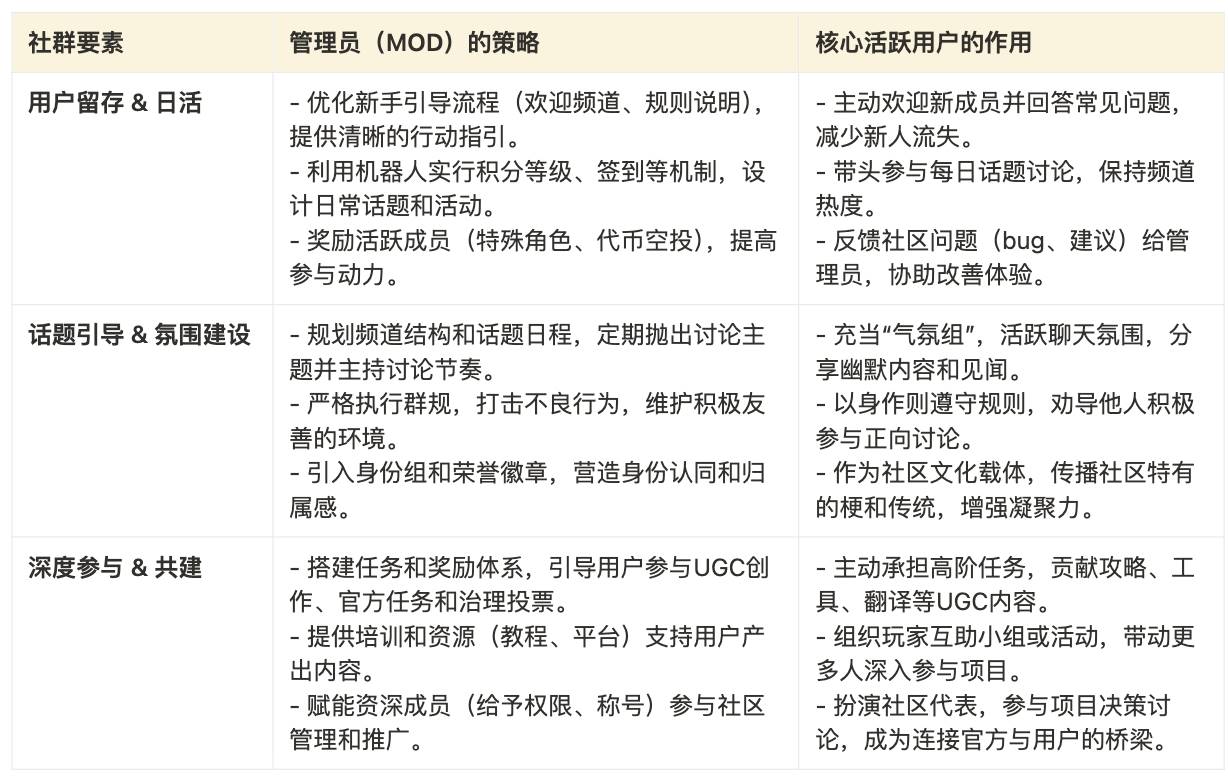
6. Case Analysis: Community Operation Practices of Pixels, Blocklords, and Matr1x
Pixels has a Discord community with more than 200,000 members. Pixels has officially built a rich channel structure and guild system to facilitate players to exchange experiences under different topics. For example, they have a dedicated Guild channel for players to form or join in-game guilds and communicate and collaborate on Discord. In addition, Pixels uses a wallet-binding Discord account mechanism to verify the game asset holdings, thereby granting special roles and permissions to holders. In terms of incentives, the Pixels community regularly holds theme events and challenges : A senior player mentioned in his evaluation of the community that he has been following the project since the "Carrot Incident" (an early creative event of Pixels), and Pixels often launches various integrated activities and theme events. These activities not only enhance the fun of the game, but also attract players to actively share their achievements and experiences, forming a good word-of-mouth communication effect.
Blocklords closely combines gameplay with community incentives through Discord. During the 2023 Blocklords Community Beta, the official announced rewards for the best-performing players, one of which was a special Discord identity - the title of "Founders Society". The first 100 players who get this role can not only enter the exclusive Discord channel to communicate directly with the development team, but also automatically obtain benefits such as priority subscription qualifications for subsequent NFTs. This approach effectively extends the competition mechanism within the game to the community level, motivating players to compete for testing. At the same time, the Blocklords community also organized a game content creation competition: encouraging players to write guides, make emoticons or live-stream trial play, and submit their works to participate in the lottery, with a chance to win rare legendary hero NFTs. This series of measures has brought remarkable results: on the one hand, the game test data is richer and the core players are more loyal; on the other hand, a large number of high-quality player-created content is spread on social media, helping Blocklords to gain popularity.
Matr1x (Matr1x FIRE) is a first-person shooter mobile game in the metaverse. Its community operation highlights lie in e-sports events and multi-platform integration . Matr1x Discord has more than 180,000 members. The project party attaches great importance to maintaining popularity through online events held by the community. For example, in 2024, they cooperated with the Community Gaming platform to carry out the "Matr1x FIRE Open" e-sports challenge, inviting players from all over the world to form teams to participate. The competition process requires players to join the official Discord and claim the "Matr1x Fire Player" role in the event area to obtain event announcements and rules instructions. Through the event, community members not only experienced the fun of competition, but also strengthened their connection with the official team (administrators will answer questions about the event in real time on Discord). In addition, Matr1x makes full use of the combination of Telegram and Discord : they operate a Telegram announcement channel to push game updates and important notifications as soon as possible, while being responsible for daily player interactions and technical support on Discord. This strategy combines the broadcasting advantages of Telegram with the community discussion advantages of Discord. For example, when a new patch is released for the game, the Telegram announcement quickly notifies more than 100,000 subscribers, while detailed patch feedback and discussions are carried out in a dedicated Discord channel. The high level of participation in the Matr1x community proves the value of multi-platform operations: different channels perform their respective functions and jointly serve user retention and conversion.
Summarize
The community of the GameFi project is not a simple information transfer station, but a core battlefield for project growth, user conversion, and brand continuation. A truly vital community must build a self-operating ecosystem from "guidance mechanism", "behavioral path", "incentive design" to "cultural precipitation". When users are willing to create content for the project, spread ideas, participate in governance, and even attract new users, they are no longer the objects of operation, but become collaborators of the project and co-owners of the ecosystem.
I hope everyone can achieve the ultimate goal of operation: not "active" but "self-generation".
4|PR cooperation: Don’t underestimate “tweeting”, the key lies in “keeping pace”
—— Web3 Project Twitter Partnership Announcement Guide
introduction
In the daily operation of Web3 projects, cooperation PR is often simplified to a "routine": posting pictures, @ the partner, and adding a tag is considered to have completed the task. But we want to say: cooperation announcements should not just be "information notifications", but should be the starting point of user behavior.
Many teams ask:
It’s clearly just a joint tweet with no actual integration, so why an official announcement?
You can write it yourself. It’s just a tweet. Why do you need to find a marketing agency?
But in real user growth practice we found that:
The real value of a collaborative tweet does not lie in whether it is posted or not, but in whether you hit the window of user attention, whether it triggers community participation, and whether you turn the collaboration into a trigger point for user trust.
Especially when the partner has a certain brand influence, the greatest potential of this type of content is:
Take advantage of the situation to amplify the market voice;
Leverage trust relationships to complete endorsements;
Embed conversion paths to guide users to take action.
It’s not just “who did we work with”, it’s “you should get involved”.
Next, we will completely break down the strategy of cooperative tweets from multiple dimensions such as structural design, release time, content composition, endorsement logic, etc., to help you truly make good use of every "official announcement."
1. Purpose of publishing cooperation announcement tweets
Amplify market signals, create buzz and trigger FOMO: Web3 projects often attract market attention by posting "partnership" announcements on Twitter, even if the collaboration itself has no substantive content. Such tweets can amplify market signals, convey to the community the impression that the project is "actively expanding", create discussion heat and create an atmosphere of "Fear of Missing Out (FOMO)". Even if the content of the collaboration is shallow, as long as the narrative is well done, it can become a weapon to create the impression that "we are actively developing" and "being accepted by the mainstream ecosystem", activating community heat and FOMO emotions.
Leverage on hot topics to increase project popularity: Cooperation announcement tweets are also often used to leverage industry hot topics to increase project popularity. If a hot topic appears in a certain field (such as Layer2 airdrops, hot tracks, etc.), even if the project itself is not closely related, it may announce cooperation with related ecosystems to gain topic traffic. By announcing support for a popular public chain mainnet, plans to integrate a popular protocol, etc., the project hopes to increase its mention rate in hot topics and direct the attention of some users who pay attention to hot topics to itself. This type of leverage can allow the project to obtain short-term traffic dividends in the hot spot and deepen the market's impression of the project's activity.
In short, the core purpose of cooperation announcement tweets lies in the core positioning : " creating credibility + guiding motivation " content starting point, marketing promotion, amplifying positive market signals, and creating a discussion boom. Even if the cooperation content itself is limited, it is necessary to trigger the community's FOMO emotion through topic packaging , bringing attention to the project and potential user growth.
2. Practical template for cooperation announcement tweets
To maximize the impact of collaboration announcement tweets, you should pay attention to the optimization of wording and format. Here is a practical template and key points:
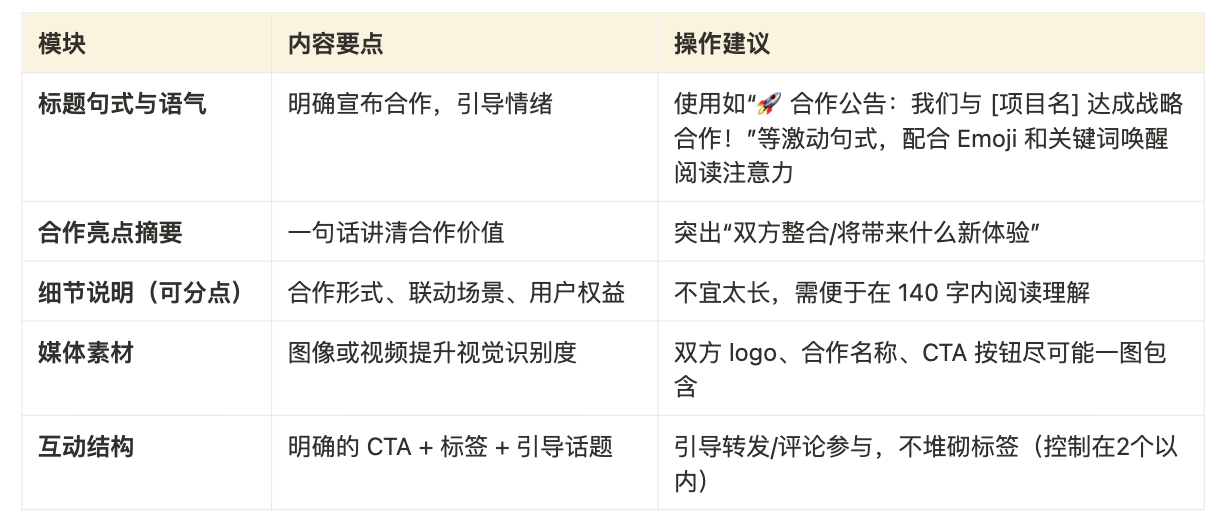
Additional suggestions:
The pictures accompanying collaborative tweets must have a "unified brand style", and the fonts/colors/visual composition must be coordinated to avoid the awkward feeling that "you two don't look like you are collaborating".
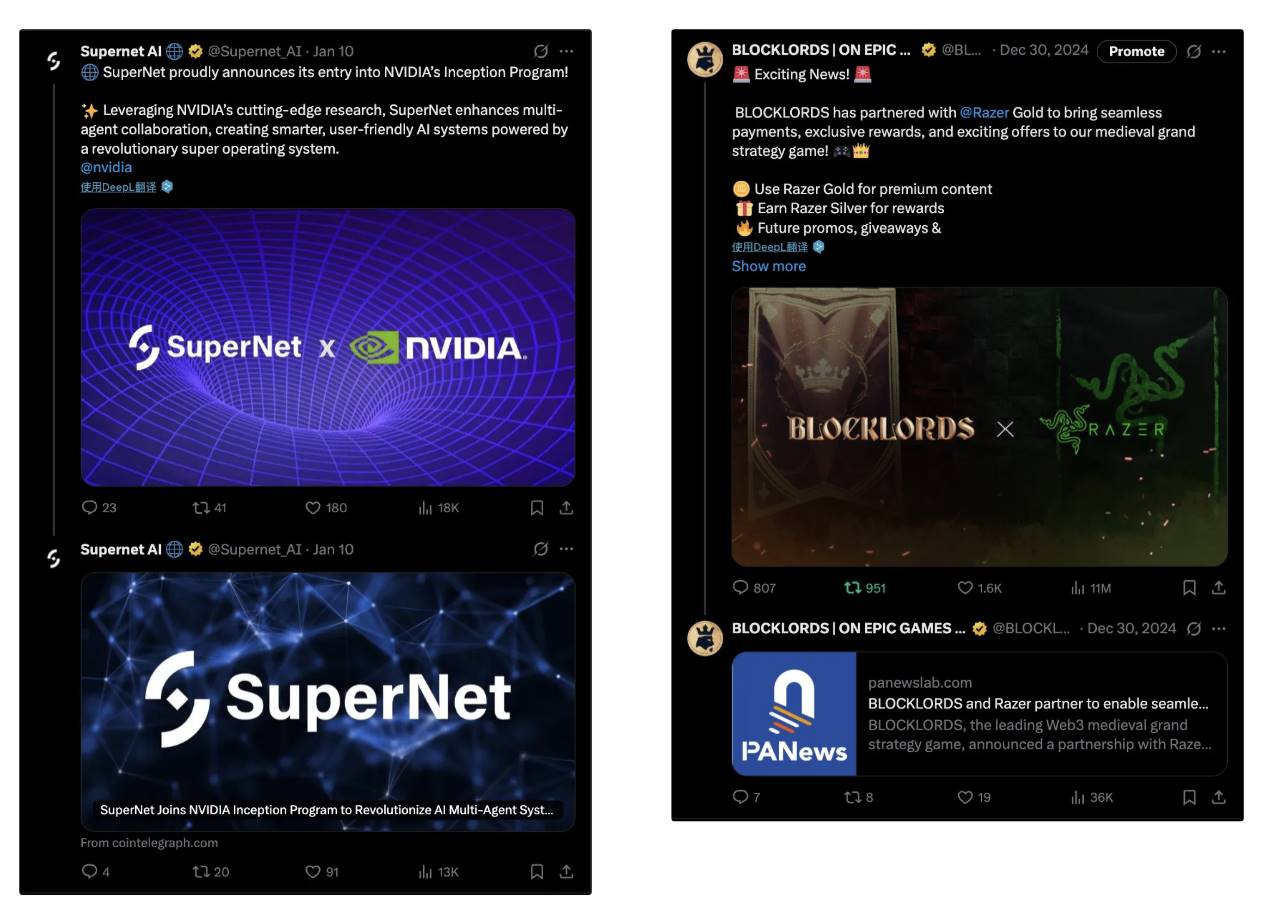
3. Release time strategy: Only by hitting the right “window” can you hit the traffic point
Choosing the right time to release a cooperation announcement can significantly amplify the communication effect. It is necessary to formulate a release time strategy based on the project's own rhythm, market sentiment, and audience active time:
Project rhythm linkage release
Linking cooperation announcements with important events or milestones of the project can help to increase the volume of the project . For example, releasing relevant cooperation announcements before and after token issuance, version updates, and major product launches can help build momentum for the ongoing campaign. Some projects even deliberately negotiate cooperation announcements at key points to create a "series of good news" effect and continuously stimulate market attention.
Market sentiment judgment
"Publish bullish news in a bull market" is the golden rule for Web3 promotion. Try to avoid periods of market slump or panic, and give priority to hot spots, favorable policies, and before and after the list is released.
Audience active time release
For European and American projects, it is recommended to publish in the afternoon UTC (morning in the US Eastern Time + noon in Europe); for Asian projects, it is recommended to publish at 8-11 pm; avoid holidays, events and other major attention-grabbing events. In general, understanding the schedule and habits of the target audience and publishing during the time when they are most likely to scroll through their screens is the key to ensuring that the announcement is widely seen.
Two-way synchronization + preheating mechanism
The most effective cooperative tweets are usually "both parties speak out at the same time", and one party releases the suspense of "imminent cooperation" in advance to warm up the community's attention and create a countdown mood. It can achieve a diffusion effect of 1+1>2. This linkage strategy can integrate the traffic of both communities, instantly detonate the topic, and increase the initial interaction volume of the tweet (retweets, likes). Twitter's algorithm tends to judge tweets with more than a certain number of native retweets as hot topics, and further recommend them to more users. Therefore, through good publishing time selection and cooperation between the two parties, the cooperation announcement tweets can break through the interaction critical point faster and be on the hot topic list.
Summary: When formulating a release time strategy, you should consider the project rhythm, market conditions, and target audience habits. Coordinating all parties to announce simultaneously in an appropriate time window can maximize the depth and breadth of the dissemination of the cooperation announcement.
4. Excellent case analysis
Case 1: Bitget and MotoGP cross-border cooperation announcement
In June 2025, the crypto exchage Bitget announced that it would become the official regional partner of some Grand Prix of the 2025 season of the World Motorcycle Championship (MotoGP) . The announcement of this cross-border cooperation achieved excellent communication effects on Twitter. The content of the tweet began with an exciting sentence : "We are very excited to announce that Bitget has become the regional partner of some MotoGP races in 2025! The first race will kick off at the legendary Mugello circuit..." Such an opening directly points out the identity of the cooperation and creates a passionate atmosphere. The subsequent tweets and supporting press releases emphasized the theme of the collision of technology and speed , highlighting how this cooperation combines the extreme passion of racing with the efficiency and precision of crypto trading. In terms of structure, Bitget's publicity and promotion are rich in pictures and texts : the tweets are accompanied by pictures/videos of the MotoGP stadium and the Bitget brand, attracting users from both sports and crypto circles with visual impact. In terms of topic selection, this cooperation spans the fields of sports entertainment and blockchain, has a natural topicality, and has attracted a large number of forwarding discussions. In terms of interactive data, Bitget's official announcement was forwarded by KOLs in the crypto and racing circles, increasing exposure; at the same time, industry media also competed to report on the matter, continuing the discussion. The success of this case lies in its clear structure ( excited announcement + key information + theme sublimation ), novel topic (traditional sports × crypto finance), and cross-circle communication through multi-channel linkage, effectively improving the Bitget brand's popularity inside and outside the circle.
Case 2: Carbon Browser’s multi-round cooperation announcement strategy
Emerging Web3 browser project Carbon Browser




